DEVELOPING A GROWTH STRATEGY FOR SITUATIONAL
BY DAVID W. NORTON


EXPLORING THE STRATEGY LIFECYCLE MAGAZINE 2024 | ISSUE 39
32 ILLUSTRATING “WHAT IS A SOUND STRATEGY SYSTEM?” 28 ENHANCING SWOT ANALYSIS FOR AN ACTIONABLE PLAN 12 GETTING “STRATEGY” INTO YOUR “STRATEGY FRAMEWORK” DOWNLOAD OR PRINT THIS MAGAZINE

Be a part of the Global Home for Strategy Professionals.
Become a Member, Today!
Gain a competitve advantage from exposure to the best thinking and guidance in formulating and executing winning strategies.
IASP is a non-profit professional society whose mission is to lead and support people and organizations through the promotion of a holistic approach to strategy management and by setting standards for strategy through thought leadership, professional development and certification.
Being a member of IASP Means –
• Opportunities to meet and learn from international strategy experts and network with peers across the globe
• Volunteer and collaboration opportunities with chapter and global committees and communities of practice
• Exclusive, member-only discounts on global conference, webinars, and educational opportunities
Membership levels range from individual to corporate group options. Visit www.strategyassociation.org and JOIN TODAY!

Strategy Magazine is a publication
the International
for
It is brought to you in collaboration with Craig Kelman & Associates Ltd. 3rd Floor – 2020 Portage Avenue Winnipeg, MB R3J 0K4 Tel: 866-985-9780 Fax: 866-985-9799 www.kelmanonline.com CONTENTS FEATURES EDITORIAL International Association for Strategy Professionals (IASP)
Editor’s Column Pierre Hadaya 4 President’s Message Monica Allen 6 USING EVALUATIVE THINKING TO ACHIEVE BETTER RESULTS Lewis Atkinson and Barbara A. Collins 8 GETTING “STRATEGY” INTO YOUR “STRATEGY FRAMEWORK”
Compo 12 EMOTIONS AND PURPOSE: HOW TO CREATE A STRATEGIC PLAN THAT PEOPLE REALLY CARE ABOUT Tim Kelley 18 DEVELOPING A GROWTH STRATEGY FOR SITUATIONAL MARKETS David W. Norton 24 FROM INSIGHT TO ACTION: ENHANCING SWOT ANALYSIS FOR AN ACTIONABLE PLAN Christian Rusteberg 28 ILLUSTRATING WHAT IS A SOUND STRATEGY SYSTEM? A SYSTEMS THINKING PERSPECTIVE Pierre Hadaya and L. Martin Cloutier 32 Advertiser Product & Service Centre 35 THE MISSION OF STRATEGY MAGAZINE IS TO PUBLISH THEORY-BASED PRACTICAL ARTICLES TO HELP EXECUTIVES, STRATEGISTS, MANAGERS, AND OTHER PROFESSIONALS BETTER FORMULATE, IMPLEMENT, EXECUTE, ENGAGE, AND GOVERN STRATEGIES. ISSN 2995-1291 © International Association for Strategy Professionals, 2024. All rights reserved. SPRING 2024 | ISSUE 39
of
Association
Strategy Professionals (www.strategyassociation.org).
37637 Five Mile Road, #399 Livonia, MI 48154 | United States E: info@strategymagazine.org W: www.strategymagazine.org
Peter
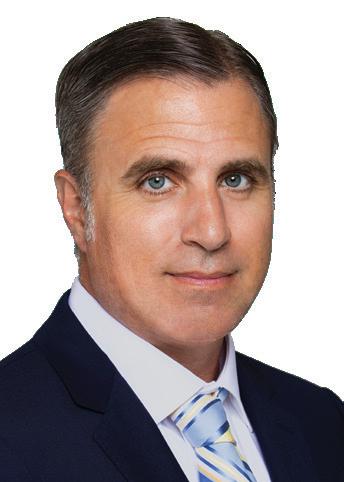 IPIERRE HADAYA, EDITOR, STRATEGY MAGAZINE
IPIERRE HADAYA, EDITOR, STRATEGY MAGAZINE
The Metaphor of the Perfect Free-Standing Handstand
recently read Invent and Wander: The Collected Writings of Jeff Bezos, with an Introduction by Walter Isaacson
There is a great passage in Amazon’s 2017 shareholder annual letter that I would like to share with the readers of Strategy Magazine. In this part of the annual letter, Bezos emphasizes the following two things required to achieve high standards in a particular domain:
1) Recognizing what good looks like in one domain, and 2) Having realistic expectations for how hard it should be (how much work it will take) to achieve that result – the scope. To make this point clearly, he first uses the metaphor of the perfect free-standing handstand which goes like this:
“A close friend recently decided to learn to do a perfect free-standing handstand. No leaning against a wall. Not for just a few seconds. Instagram good. She decided to start her journey by taking a handstand workshop at her yoga studio. She then practiced for a while but wasn’t getting the results she wanted. So, she hired a handstand coach. Yes, I know what you’re thinking, but evidently this is an actual thing that exists. In the very first lesson, the coach gave her some wonderful advice. “Most people,” he said, “think that if they work hard, they should be able to master a handstand in about two weeks. The reality is that it takes about six months of daily practice. If you think you should be able to do it in two weeks, you’re just going to end up quitting.” Unrealistic beliefs on scope – often hidden and undiscussed – kill high standards. To achieve high standards yourself or as part of a team, you need to form and
proactively communicate realistic beliefs about how hard something is going to be – something this coach understood well.”
After putting forth this metaphor, Bezos uses the example of writing Amazon’s natively structured six-page memos. These memos, introduced by Bezos in 2004, have become the standard for communicating effectively at Amazon, whether to present ideas or conduct meetings. Bezos writes…
“In the handstand example, it’s pretty straightforward to recognize high standards. It wouldn’t be difficult to lay out in detail the requirements of a well-executed handstand, and then you’re either doing it or you’re not. The writing example is very different. The difference between a great memo and an average memo is much squishier. It would be extremely hard to write down the detailed requirements that make up a great memo, I find that much of the time, readers react to great memos very similarly. They know it when they see it. The standard is there, and it is real, even if it’s not easily describable.
Here’s what we’ve figured out. Often, when a memo isn’t great, it’s not the writer’s inability to recognize the high standard, but instead a wrong expectation on scope: they mistakenly believe a high-standard, six-page memo can be written in one or two days or even a few hours, when really it takes a week or more! They’re trying to do the perfect handstand in just two weeks, and we’re not coaching them right.
The great memos are written and re-written, …, set aside for a couple
of days, and then edited again with a fresh mind. They simply can’t be done in a day or two. The key point here is that you can improve results through the simple act of teaching scope –that a great memo should probably take a week or two.”
When I read this passage, it immediately made me think of how we tend to underestimate all that is required to write a great Strategy Magazine article. Indeed, the requirements that make up a great article are not easy to write down. A great theory-based practical article in strategy will not only vary from one subject to the next but also according to the theory or theoretical concepts upon which the article is anchored. Furthermore, writing a Strategy Magazine article is more than having an idea and swiftly putting it on paper/computer. In addition to taking creativity and strong writing skills, creating a well-structured and tightly knit piece with great content and insight in less than 2,000 words, which strategy practitioners can easily read, reflect on, and put into action, takes much more discipline, time, and patience than we initially estimate.
To support authors in this endeavor, I’ve implemented an effective and efficient collaborative process with authors that maximizes the quality and impact of our articles with the least amount of time and effort as possible (to write a great piece). This process encompasses four major steps: (1) Identifying a sound or promising idea, along with the theoretical concepts to anchor it, as well as determining the “practical” objective and contribution of the article; (2) Structuring the paper and its sections to ensure flow; (3) Writing the paragraphs; and (4) Adjusting, improving and finalizing the paper. And I’m happy to say that executing this process in
Editor’s Column
4 SPRING 2024 | ISSUE 39 | STRATEGY MAGAZINE RETURN TO CONTENTS
collaboration with great authors has led to the publication of six excellent articles in the current issue that should propel Strategy Magazine toward becoming the standard for theory-based practical research in strategy management.
In the first article, Using Evaluative Thinking to Achieve Better Results, Lewis Atkinson and Barbara A. Collins propose a novel method of inquiry based on evaluative thinking that can aid leaders in explaining how and why a particular combination of strategic actions are working in the way that they intended.
In the second article, Getting “Strategy” into Your “Strategy Framework,” Peter Compo clarifies the difference between a strategy and a strategy framework and introduces the strategybottleneckaspiration triad, the design of which is a valuable first step for incorporating a strategy into a strategy framework.
In the third article, Emotions and Purpose: How to Create a Strategic Plan that People Really Care About, Tim Kelley proposes an emotionally-based,
purpose-driven method to create strategic plans that maximize motivation.
In the fourth article, Developing a Growth Strategy for Situational Markets, David W. Norton explains the concept of a situational market, distinct from the traditional concept of a market, and proposes an approach for sizing situational markets. This approach enables companies to build new market strategies that create far more revenue.
In the fifth article, From Insight to Action: Enhancing SWOT Analysis for an Actionable Plan, Christian Rusteberg describes SWOT and its limitations, and introduces a new method that addresses the traditional framework’s shortcomings so it can reach its full potential.
The last article is the result of popular demand. Indeed, these last few years, I’ve been asked by several readers and colleagues for more details as to what a sound strategy management system actually is. To answer this important question, I’ve teamed up with my friend, colleague and expert in business dynamics, Martin Cloutier.
Our explanation is summarized in our article Illustrating What is a Sound Strategy System? A Systems Thinking Perspective. To conclude, I would like to thank all those who have contributed to the publication of this issue, especially my associate editor, Tamara Highsmith, and Katie Woychyshyn from Craig Kelman & Associates, without whom bringing this issue to publication would not have been possible. Together, we hope that you’ll enjoy this issue as much as we enjoyed preparing it.
If you have any comments or suggestions on this or upcoming issues or would like to volunteer to help Strategy Magazine in implementing and executing its mission, please don’t hesitate to contact me.
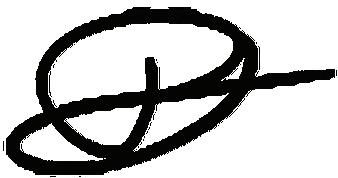 PIERRE HADAYA , PHD, ASC Editor, Strategy Magazine pierre.hadaya@strategymagazine.org
PIERRE HADAYA , PHD, ASC Editor, Strategy Magazine pierre.hadaya@strategymagazine.org

EXPLORING THE STRATEGY LIFECYCLE
Call for Ideas
The mission of Strategy Magazine is to publish theory-based practical articles to help executives, strategists, managers, and other professionals better formulate, implement, execute, engage, and govern strategies. The magazine is dedicated to helping executives, strategists, managers, and other professionals make their strategy work. Topics relevant for our readership include, but are not limited to:
• Novel and proven ideas and practices (e.g. methods, techniques and tools) to support the formulation, implementation, execution, engagement and governance of sound strategies.
• Thought provoking case studies and summary survey findings in the field of strategy.
If you are interested in joining the leading practitioners and researchers that provide quality articles that will shape the future of the field of strategy, please complete the idea form on our website (www.strategymagazine.org) and send it to us by email at pierre.hadaya@strategymagazine.org.
Best wishes,
 PIERRE HADAYA , PHD, ASC Editor, Strategy Magazine
PIERRE HADAYA , PHD, ASC Editor, Strategy Magazine
MAGAZINE
STRATEGY MAGAZINE | ISSUE 39 | SPRING 2024 5 RETURN TO CONTENTS
 AMONICA ALLEN, IASP PRESIDENT
AMONICA ALLEN, IASP PRESIDENT
Reestablishing Our Strategic Direction
s I think about our work at the International Association for Strategy Professionals (IASP), I want to thank each of you for reading this message. You are volunteers, contributors, supporters, cheerleaders, and believers in the work of IASP. And for that, I am grateful as your President. You each have made this association amazing.
As we look to the future of IASP, I am excited and energized by some of the recent work we have done. When I became President in the summer of 2023, one of the first tasks I needed to focus on was to rally the Board to work on the 2024-2026 strategic plan for IASP. I am happy to say that we completed and approved our new strategic plan and are in the implementation process.
A little about the development of this plan…
During the 2023 summer Board retreat, it became apparent to many of us that we should embrace parts of the 2020-2022 strategic plan, focus on the future, and identify new and fresh ways to complement the last strategic plan. As such, we landed on three priority areas that shape and frame our work. Those areas are:
1. Membership: IASP attracts and retains members globally and cultivates an environment where members serve as ambassadors for IASP
2. Connections: IASP offers highquality content and networks that connect and engage IASP and its stakeholders
3. Organizational Sustainability: IASP has effective management and adequate resources (financial and HR) to achieve its mission and strategic goals
With membership, we want to grow and retain members globally while leveraging the work identified in the connections priority area. That work will consist of having a better focus on the Communities of Practice (CoPs), which, for our new members, are spaces for likeminded or like-sector persons to come together in various ways such as webinars, table talks, general conversation, or other fun things to share and do. We also want to continue supporting the chapters across the globe and expand the number of chapters into places we are not currently in but may have members who are in those places. Also, another key thing for us is to think of ways to build new relationships and partnerships with colleges and
In addition to completing a strategic plan, we also have other accomplishments:
• Started new chapters in the UK, Nigeria, and Saudi Arabia – thus expanding our global reach.
• Re-engaged potential partners of the association.
• Completed the 2024 Member Survey in January. Thank you to those who responded. We received a great amount of feedback from you and will share results with the full membership once all the data is analyzed.
• Certified 79 individuals since July 1, 2023 as either Strategic Management Professional (SMP) or Strategic Planning Professional (SPP).
“ AS WE LOOK TO THE FUTURE OF IASP, I AM EXCITED AND ENERGIZED BY SOME OF THE RECENT WORK WE HAVE DONE.
universities, develop and implement a content management strategy, and enhance and expand our global webinar offerings. Lastly, what we do in the membership and connection arena leads us to organizational sustainability, which includes working with current and new partners, evaluating and identifying methods to increase revenue and/or decrease costs from existing knowledge assets, and reviewing our HR and governance models and frameworks.
By focusing on those three priority areas, our association will be stronger. Having seen significant increases in membership growth numbers in recent months, we want to be positioned to meet member needs as well as clarify who we are, what we do, and why we do it.
While the first year of my presidency has focused on reestablishing our strategic direction and being intentional about what we need to focus on, please know that IASP is doing well and has a lot of great volunteers and partners behind the association.
I look forward to seeing you and meeting you in Calgary in June! Our planning team has worked tirelessly to prepare and deliver a wonderful conference.
I want to thank the IASP Board of Directors, including Pierre Hadaya, PhD, ASC, the Editor of this publication.
All the best,
MONICA R. ALLEN, PHD 2023-2025 IASP President
President’s Message
6 SPRING 2024 | ISSUE 39 | STRATEGY MAGAZINE RETURN TO CONTENTS
• June 6 & 7 at the two-day exam prep workshop “The Systems Thinking Approach® to Strategic Management” lead by Valerie MacLeod, MBA, SMP, IASP Pioneer and Global Partner at The Haines Centre for Strategic Management; and Dr. Lewis Atkinson, Global Partner at The Haines Centre for Strategic Management. Join this global team to learn a Systems Thinking approach to strategic planning and execution.
• At our dynamic booth in the Exhibitor Hall for additional learning opportunities.
• Go to www.systemsthinkingpress.com for cutting edge resources based on the systems thinking approach®

To register for the original IASP certification preparation workshop: www.valeriemacleod.com/sta-to-sm-iasp-exam-prep-2024-conference Use code IASPHAINESCENTRE at checkout for 10% discount.
BY LEWIS ATKINSON AND
All strategy is a hypothesis and its implementation is an experiment in execution (Atkinson and Collins, 2023). Strategic actions selected for implementation are those with the greatest likelihood of moving the organization closer to achieving its vision, mission, and values. Unfortunately, when making decisions about strategy, most leaders rely too heavily on intuition and their causal reasoning may be flawed (Lovallo and Kahneman, 2003). The objective of this article is to propose a novel method of inquiry based on evaluative thinking that can aid leaders in explaining how and why a particular combination of strategic actions are working in the way that they intended. The proposed method can also help them gradually improve the quality of evidence supporting their causal claims (e.g., increasing advertising increases sales).
USING EVALUATIVE THINKING TO ACHIEVE BETTER RESULTS

This sort of thinking is also known as causal inference. The desired results or ends are what we aim to achieve, and the means are the way in which we choose to achieve them. Put differently, strategic action A causes result B, mediated by conditions C and D.
EVALUATIVE THINKING: WHAT WORKS, FOR WHOM AND UNDER WHICH CONDITIONS
The strategic question we are concerned with is: What is the causal effect of a strategic action
To understand causality, strategy professionals and their leaders must adopt a disciplined approach to testing and adapting each strategic action as a theory, rather than a fact. The evaluation should consider how things will change (i.e., hypothesised causal mechanism), including forensic analysis of assumptions about the conditions necessary for the intended result to be achieved. This discipline, called evaluative thinking, necessitates “thinking about your thinking” – the way one reasons, plans, and acts. It involves examining potential flaws in one’s own causal reasoning, motivation, biases and wishes, and learning from failures as well as successes.
observed result a direct consequence of the action. There are conditions such as capabilities and resources and causal mechanisms, or a combination of underlying enabling tactics and business models, processes, or structures, that also impact observed results. Therefore, the cause must be inferred from observed evidence and causal reasoning. Evaluative thinking begins with a clear articulation of the evidence that would indicate the emergence of the desired outcomes from the selected means.
In practice, confidence in causal claims increases by stepping up the rungs of a “hierarchy of causation” (Pearl, 2000) as shown in Table 1.
METHOD FOR USING EVALUATIVE THINKING TO ACHIEVE BETTER RESULTS
A strategic management system (SMS) is a comprehensive “system” that allows leaders to “transform the organization in an effective, efficient
DOWNLOAD OR PRINT THIS ARTICLE 8 SPRING 2024 | ISSUE 39 | STRATEGY MAGAZINE RETURN TO CONTENTS
LEVEL OF CAUSAL HIERARCHY REAL-WORLD EXAMPLES OF INCREASING LEVELS OF CAUSAL UNDERSTANDING
1. Association (Seeing: what is?)
2. Intervention (Doing: what if?)

(Understanding: why?)
“Every day in the US, thousands of kids still pick up a tobacco product for the first time” (Anonymous II). This observation does not tell us anything about the cause of what we observe; no causal understanding.
Causes that are hypothesized to influence teen smoking include parents who smoke, peer pressure, smoking as a form of rebellion, seeking altered states, clever marketing, etc. These are simply ideas about possible causes of what we observe, without evidence to support any of these hypotheses (alternate causal explanations).
Through A/B testing on matched samples, it was determined that parents who smoke are more influential on teen smoking behaviour than clever advertising alone. Testing and validation help increase our understanding of cause, which strategic action has greater effect, under what mediating conditions and why (evidence confirms causal mechanisms that describe how it is that the strategic action contributes to observed results).
THREE LEVELS OF INCREASING CAUSAL UNDERSTANDING (1 LOW TO 3 HIGH)
and agile manner” (Hadaya, Stockmal , 2023). This transformation results from achieving three goals underpinned by three universal premises (see Table 2) which guide the enterprise-wide implementation of the SMS (Haines and McCoy, 1995).
The five-phase method proposed ties the activities of strategy formulation implementation, and execution together in an iterative cycle of continuous improvement, even though presented linearly. The following paragraphs describe each phase for which the objective, a description, techniques, and linkage to the relevant SMS goal or premise are presented.
Phase 1: Achieve a Shared Understanding of Vision, Goals, and Strategy Mechanisms
The objective of this phase is to create a shared understanding of the organization or program vision, goals, and causal mechanisms. The most effective way to do this is through a technique called Parallel Stakeholder Engagement, whereby those implementing the strategy are involved in its formulation. This early and frequent involvement enhances engagement with underlying logic and hypothesised causal mechanisms and assumptions, thereby creating a sense of ownership necessary for successful execution; a key premise of the SMS (see Table 2).
Phase 2: Quantify Shared Understanding by Identifying Evidence of Achievement
The objective of this phase is to identify clear and measurable results (the ends) for the organization or program. This involves translating detailed definitions of the shared vision, mission, and values into tangible evidence of achievement that is clearly understood by both the Board and executives. Two techniques help participating stakeholders focus and agree on customer-centric measures of success: the mission triangle and the customer value-added star. The mission triangle technique asks three clarifying questions in sequence: Who is the customer we serve? What needs do they have that we want to fulfill? What do we do to meet those needs? The customer value added star technique is then used to rank relative competitive positioning of what the organization does for the customer across five criteria: cost, responsiveness, choice, service, and quality. Quantification of these ends can only come after SMS Goal #1 has been achieved. Only then can the means of achieving these ends be formulated.
Phase 3: Select Strategic Actions That Have the Greatest Likelihood of Achieving Results/Ends
This is where the formulation of the means to achieve desired ends begins. The objective of this phase is to select
GOAL/PREMISE WHY IT WORKS AS PART OF A STRATEGIC MANAGEMENT SYSTEM
Goal #1 Achieve clarity of purpose and direction
Goal #2 Ensure successful transformation
Goal #3 Sustain high performance over the long term
Premise #1 Planning and change are the primary job of leadership
Premise #2 People support what they help create
Premise #3 Systems thinking – focus on outcomes – that serve the customer
TABLE 2: THREE GOALS AND THREE PREMISES OF STRATEGIC MANAGEMENT
and prioritise strategic actions to transform the operating model by building on strengths and leveraging partnerships to fill capability gaps. Strategists can use a technique called current state assessment here, which includes internal and external analyses to determine what is working now and the best alternative use of resources in the form of new strategic actions. This phase contributes to the achievement of SMS Goal #2 because it prioritises strategic actions, which transform the existing operating model and realign it to the new strategy.
Phase 4: Map Strategic Actions to the Relevant Results/Ends in a Matrix of Causal Relationships
The objective of this phase is to be very explicit about the hypothesised, causal relationships that connect actions to results. These connections, devised in Phase 3, are tested/validated by the Board and executives in Phase 5. This phase maps the action/result connection to show the extent (i.e., casual strength and over what timeframe [short-term vs. long-term]) each strategic action is expected to contribute to a change in each result. A simple matrix can be used to map actions (means) to results (ends) (Figure 1). This work allows the achievement of SMS Goal #3 because it provides a test bed for the experiment of execution.
Phase 5: Test and Resolve the Validity of Hypothesised Causal Relationships in the Matrix
The objective of this phase is to not only test and validate but to also refine the story of how each strategic action actually caused an observed change in result(s), whereby successive trial and error ensures that the best possible combination of interrelated strategic actions (means) evolves over
STRATEGY MAGAZINE | ISSUE 39 | SPRING 2024 9 RETURN TO CONTENTS
time to best serve changing customer needs, translating to better results (ends). For each cell mapped in the matrix, stakeholder insights are used to validate and resolve possible causal mechanisms and the contribution of the strategic action to the observed changes in results. During this phase, the Board and executives are asked: “In light of the multiple factors influencing a result, has this strategic action made a noticeable contribution to an observed result and in what way?” The technique used to develop the story is called contribution analysis (Mayne, 2001). The purpose of this technique is to prove or disprove causality, or imagining and eliminating alternative explanations. It uncovers conditions, causal mechanisms, and/or associated feedback loops (both positive and/or negative reinforcing) between strategic actions in the matrix. Another useful technique is sensitivity analyses, which involves analyses of how sensitive the results are to variations in the levels of assumptions about prevailing mediating conditions (e,g., low, medium, or high). The sensitivity can be modelled for each causal claim to estimate the extent the observed results would change at each level, or if at all. The work done in this phase is guided by the SMS Premise #1, which entails building an internal management capability to support successful execution (buy-in) and ownership (stay-in) for implementation.
To demonstrate how this method can be applied, the example of a causal claim that “more beef industry advertising increases demand for beef in Australia” (see Anonymous III for more case study details). To this end, Aggressive promotion of Beef in the Australian market was a strategic action chosen by Meat & Livestock Australia (MLA). It invested approximately $29.5 million in beef industry promotional campaigns in Australia between 2004-2005 and 2009-2010. The intent was to increase the value of beef sales in the Australian market by $300 million each year, over six years. The example is an important demonstration of the application of evaluative thinking:
Phase 1 confirmed a shared vison and common goal of increasing value of beef sales. The MLA Board and cattle industry levy-payer representatives
THE CROSS-TAB RELATIONSHIP BETWEEN PROGRAMS AND POPULATION RESULTS
Program 1
e.g. Job Training Program 2
e.g. Trash Recycling
Program 3
e.g. Child Care Program 4
e.g.
Program 5
e.g.
Program 6
e.g.
Program etc.
e.g.
FIGURE 1: GENERIC MEANS/ENDS MATRIX
discussed ways to achieve this. Based on their shared understanding they proposed the following hypothesis; “increasing beef industry advertising by $4.9 million per year increases value of beef sales by $300 million per year.”
Phase 2 sought to identify a clear and measurable increase in beef sales value arising from this $4.9 million per year advertising strategy. The MLA Board and executives decided to track the monthly change in the dollar-value of beef expenditure per buyer as a consequence of advertising. The monthly promotional campaign schedule during 2005-2010 was compared to a time-series of AC Neilsen Homescan beef expenditure data over the same period in 2004-2005 and 2009-2010.
Phase 3 considered the likelihood of the advertising strategy actually increasing beef sales value.
The observed changes in monthly expenditure per buyer provided no evidence of any increase in the value of beef sales in the period after any of the scheduled dates for promotional campaigns, nor was there any evidence of a sustained long-term trend of increasing value of sales. This concerning result was confirmed by traders actually selling beef in the market (meat packing companies, supermarkets and retail butchers). The finding was further reinforced by evidence provided by traders that the $29.5 million spend by
MLA was quite small relative to their own advertising spent over the same period. Yet, they did believe that beef industry advertising was complementary, albeit in a relatively small way, to their own private company marketing strategies. So, the MLA Board and cattle levy-payer representatives funding the strategy, agreed with marketing executives to re-configure the beef industry advertising strategy. It built on the strengths of the existing strategy and leveraged partnerships with traders in order to get better results from future beef industry advertising.
Phase 4 mapping advertising strategy to relevant results. The analysis in Phase 3 identified two new strategic mechanisms thought to be at work at an all-of-marketsystem level: consumer awareness and channel engagement (Figure 2). The plausible alternative hypothesis to be tested was that the consumer campaigns (Figure 2, yellow section) could be re-configured to support the entire beef category by helping to maintain awareness of the positive attributes of beef among consumers. This heightened awareness of positive attributes could then be leveraged by traders advertising private-brands to increase the value of their own beef sales. It was also posited that complimentary channel engagement activities (Figure 2, grey section) could maintain market penetration/share for
Prosperous
Safe Communities Result
Strong Families
etc.
Result 1
Economy Result 2 Clean Environment Result 3
4
Result 5
Result 6 etc.
DIRECT SHORT-TERM INDIRECT SHORT-TERM DIRECT LONG-TERM INDIRECT LONG-TERM
10 SPRING 2024 | ISSUE 39 | STRATEGY MAGAZINE RETURN TO CONTENTS
the traders’ private brands by increasing the amount retail shelf space for beef and thus increasing the opportunity for consumers to choose beef for purchase. Phase 5 testing and resolving the validity of plausible causal relationships. New insights generated in Phase 4 enabled MLA Board and cattle levy-payer representatives funding the strategy to develop a new result for future beef industry advertising; “counter pressures (economic, health, environmental) to reduce red meat consumption by contributing to maintaining consumer expenditure on beef at $6.6 Billion.” The MLA marketing executives then worked to refine the story of how the hypothesised effect of the interaction between these two new strategic mechanisms combined to achieve this new all-of-market-system level result. Ongoing review and adjustment to beef industry advertising strategy now occurs in partnership with traders so that the best possible combination of interrelated strategic actions evolves over time contributing to achieving this all-ofmarket-system result.
CONCLUSION
This paper proposes a novel method of inquiry based on evaluative thinking. Evaluative thinking is a key part of
systemic management of strategy and crucial to more accurately defining strategies and removing human biases. Strategists wanting to include this method as part of their practice should not be discouraged by initial resistance from their Board and executives. Human nature, optimism, and confirmation seeking biases and in some cultures a tendency towards “saving face” means that leaders will rarely be inclined to invest in seeking reasons for why their chosen strategic action is not working as intended. However, careful facilitation of leaders and their Boards to help them “think about their thinking” and the way(s) they reason, plan, and act will enable organisations to benefit from better learning from failures as well as successes.
REFERENCES
Anonymous I (2023) Evaluative Thinking. Better Evaluation. www.betterevaluation.org
Anonymous II (2023) Smoking Facts American Lung Association. www.lung.org/quit-smoking/ smoking-facts
Anonymous III (2023) Aggressive Promotion in the Domestic Market (Beef). Meat & Livestock Australia.
ABOVE-THE-LINE ADVERTISING EARNED MEDIA
Atkinson, L., and Collins, B. (2023) Is This Strategy Working?: The Essential Guide to Strategy Development, Evaluation, and Goal Achievement. Systems Thinking Press.
Hadaya, P., Stockmal, J., et. al. (2023) IASPBOK 3.0: Guide to Strategy Management Body of Knowledge International Association for Strategy Professionals.
Haines, S. and McCoy, K. (1995) SUSTAINING High Performance: The Strategic Transformation to A Customer-Focused Learning Organization. CRC Press.
Lovallo, D. and Kahneman, D. (2003) Delusions of Success: How Optimism Undermines Executives’ Decisions. Harvard Business Review, 81(7).
Mayne J. (2001) Addressing Attribution Through Contribution Analysis: Using Performance Measures Sensibly. Canadian Journal of Program Evaluation, 16(1), 1-24.
Pearl, J. (2009) Causality: Models, Reasoning, and Inference Cambridge University Press, New York.
ABOUT THE AUTHORS
Dr Lewis Atkinson (CEng, CChem, BSc, PhD (Chem Eng), MBA, PSM) is a Global Partner with the Haines Centre for Strategic Management Limited (t/a The Systems Thinking Approach®) and has government, private, and non-profit clients in Australia and internationally. Lewis is a unique innovation professional with a solid technical and financial grounding, which, combined with his systems-thinking superpowers, enables him to see patterns, pathways, and solutions that others do not.
E: lewis@hainescentreaustralia.com.au
Barbara A. Collins (B.A. (Soc. Psy.), M.S. (Education), SMP Pioneer #019) has more than 20 years of experience as a manager and department head in both government and private organizations and more than 30 years’ experience in organization development and strategic planning as both an internal and external consultant.
E: barbaracollins36@me.com
FIGURE 2: REINFORCING STRATEGIC MECHANISMS AT WORK AT A WHOLE-OF-MARKET SYSTEM LEVEL MLA BEEF PROMOTIONAL PROGRAM STRATEGIC FRAMEWORK CONSUMER CAMPAIGN CHANNEL ENGAGEMENT GROWS
BEEF
SHELF SPACE) BELOW-THE-LINE POINT-OF-SALE
FOODSERVICE MENU INSPIRATION
PHYSICAL AVAILABILITY OF
(DISTRIBUTION,
MATERIAL,
GROWS MENTAL AVAILABILITY OF BEEF (SALIENCE, CONSIDERATION) RefneStrategy SeasonalMeal Campai g n s Supply ChainCollaboration C a t e go r y Development
& PR
STRATEGY MAGAZINE | ISSUE 39 | SPRING 2024 11 RETURN TO CONTENTS
GETTING “STRATEGY” INTO YOUR “STRATEGY FRAMEWORK”



















































 BY PETER COMPO
BY PETER COMPO
























Most people would presumably agree that a strategy framework, often called a strategic plan, is essential for making change and innovating. A strategy framework consists of various choices and combinations of vision, mission, goals, priorities, initiatives, pillars, plans, tactics, diagnosis, metrics and so on. Yet, the one component that is most often missing in a strategic framework, is a strategy. One reason for this absence is confusion about what strategy is, including the belief that the framework with all of its components –often including long lists – is itself the strategy. The objective of this article is to clarify the difference between a strategy and a strategy framework and introduce the strategybottleneckaspiration triad, the design of which is a valuable first step for incorporating a strategy into a strategy framework.
STRATEGY: THE CENTRAL RULE OF A STRATEGY FRAMEWORK
Figure 1 presents and defines each of the components of a full, but simpler, strategy framework. Each component
DOWNLOAD OR PRINT THIS ARTICLE RETURN TO CONTENTS 12 SPRING 2024 | ISSUE 39 | STRATEGY MAGAZINE
has a unique role in bringing the organization or system from a current state to a future state. Note that only large and complex endeavours will require the use of every framework component. Of particular importance is the role of rules, sometimes called policies, which provide real-time guidance for making choices and taking action during framework implementation. The strategy component is the central rule that guides and unifies all actions and choices towards overcoming what is in the way of the organization’s aspiration, in other words, for “busting” the bottleneck to your aspiration. Tactics are rules that apply to smaller scopes of the endeavor. Busting means to lessen, get around, or eliminate what is in the way of the aspiration. The aspiration determines the scope and aim of the endeavor.
DESIGNING A STRATEGYBOTTLENECK ASPIRATION TRIAD
The strategybottleneckaspiration triad, shown in Figure 2, is the core of the strategy framework. The triad is derived from an influence-diagram model of adaptive systems. It is written with back-arrows to indicate that the bottleneck is derived from the organization’s capabilities relative to the aspiration, and the strategy is derived from the bottleneck, not from the aspiration directly. The fluted shape indicates that when working backwards from an aspiration, the required number of choices and actions grows dramatically. The strategy must unify all of these choices and actions. The triad is aligned to varying extents with the
COMPONENTS ROLE
TWO EXAMPLES OF EACH Values
Statement of that which has intrinsic worth or cannot be violated
Aspirations Vision Mission Goals
Diagnosis Propositions
External constraints
Scenarios
Bottleneck
Rules
Strategy (central) Tactics
Plans/Initiatives
Projections
Metrics
Milestone adherence
Description of your (believed to be) desired future state
Analysis of the dynamics of the internal and external world in which you operate
Real-time guidance for taking actions and decisions to bust bottlenecks
Feedforward simulations and intended actions for coordination, synchronization, and reality testing
Feedback to understand how the system is evolving
works of Rumelt (2011, 2022), Sull and Eisenhardt (2015), Goldratt (1990), and Xiu-bao Yu (2021).
The following four activities introduce the basics of desiging a triad and incorporating the results into the strategy framework using an emergent approach. Such an approach uses an agile design process that begins with a minimum essential draft that is then refined, not a buildup in sequential steps. Think of it as solving a puzzle guided by design principles.
Value: Low carbon footprint/integrity before profits.
Vision: Grow in Africa/NGOs with limited technical skills enabled to use Al.
Mission: Change the organization’s culture/ create a new premium product line.
Goal: Reduce Inventory by 40% in 15 months/ increase gross margin by 20% in two years.
Prop: 20% cost advantage/brand recognition.
Ext. Const: Cannot sell to Russia/ environmental regulation.
Scenarios: Prime rate at 2% and at 6%/ competitors abandon China.
Bottleneck: Product line is too complicated/ organization unaligned.
Strategy: Stop investing in the product line XYZ/migrate to fully digital operation stepwise over five years.
Tactic: Outsource product testing/ new hiring policy.
Plan: Complete stability testing by 4/15/2026 or set up new sales office in Nigeria by 9/15/2025.
Projection: African market will grow 15%/year for five years/we will increase capacity by 90% in three years.
Metric: Average quarterly sales price in Africa/policy adherence by product group.
Activity 1: Draft the Triad
The strategy team drafts a triad by working backwards from an aspiration to articulate possible bottlenecks and strategies for busting the bottlenecks. Like everything else in agile strategy design, an aspiration may change as the overall framework evolves and as the implications of the envisioned future state become clear. The one exception is if leadership supplies non-negotiable marching orders. All three types of aspiration – vision, mission, specific goal – are not needed. Choose the type that best captures the aim of the endeavor.
An aspiration can range from a massive vision or mission for creating an entire new business or product platform to improvement of an existing one. The need for improvement can range from the desire to capture new opportunities to dissatisfaction with current performance, up to response to a crisis. In every case, the design approach is the same and it is the aspiration, not the strategy, that sets the scope and time horizon for the endeavor. Strategy is not just for long term. It is for achieving any future state that has uncertainty and requires tradeoffs to acheive.
FIGURE 1: A STRATEGY FRAMEWORK (STRATEGIC PLAN) SHOWING STRATEGY AS ONE COMPONENT
Aspiration (Believed to be) desired in future state
What
in the way
Bottleneck
is
BOTTLENECKASPIRATION TRIAD
Central rule that guides choices and actions Choices Choices Choices Choices Choices Choices Choices Choices Choices Choices Choices Choices Choices Choices Choices Actions Actions Actions Actions Actions Actions Actions Actions Actions Choices
FIGURE 2: THE
STRATEGY
Strategy
STRATEGY MAGAZINE | ISSUE 39 | SPRING 2024 13 RETURN TO CONTENTS
Consider the example of a product line that has grown at a good rate over several years but leadership is dissatisfied with its profitability. A team is formed to design a strategy framework to achieve raising gross margin by 12% in two years. Figure 3 shows this aspiration (a specific goal) along with the team’s initial brainstormed ideas for possible bottlenecks and strategies. They do this without too much concern for design principles, knowing the ideas will be refined.
When brainstorming, be expansive in exploring what the bottleneck could be using the following list as thought starters. The natural impulse is to consider traditionally measurable factors and outside influences, but bottlenecks come in many varieties and require a hard self-critical look at reality. For example:
• Culture
• Emotions
• Intelligence (market, competition, government)
• Process capability
• Digital capability
• Assets or equipment
• Methods
• Procedures
• Capital
• Complexity
• Lack of alignment or common language
• Bad or missing strategy framework
• Bad or missing tactical policy
Activity 2: Refine the Diagnose of the Bottleneck
Once an aspiration, possible bottlenecks, and strategies are identified, the team can focus on debating and discovering which is truly in the way of the aspiration – the dominant bottleneck. While there is no simple formula for doing so, three guidelines can help determine if the bottleneck selected is the correct one. The first guideline is that the bottleneck should not be extremely easy or impossibly hard to bust. For example, the bottleneck in Figure 3, “We have not communicated the margin imperative,” is in many cases trivial because the team can just go do it. The bottleneck, “Our factories are in a high-cost region,” might be impossibly hard to bust and therefore not useful either if, for instance,
Strategy? Bottleneck? Aspiration
1. Reduce raw material and supply chain cost by 15%, increase yields by 5% and first pass quality by 15%, and raise prices for highest cost products
2. Launch fewer new products but spend more time on designing them for lower cost
3. Change the product line to the right balance between features for customers and cost
4. Create three initiatives: raw material cost reduction, supply-chain simplification, and customer understanding
• Marketing is used to getting whatever they want
• Marketing ignores the cost of the product features they demand and manufacturing is accused of not being “customer-focused” if they object
• Our factories are located in a high-cost region
• Our culture is growth at any cost
• Our profitability is in the bottom quartile of our industry
• We haven't communicated the margin imperative
relocating the factories will cost more than five years of earnings.
The second guideline is that the bottleneck should not be simply a restatement of the aspiration or the reason for the aspiration. “Our profitability is in the bottom quartile of our industry,” in Figure 3, may be a more vivid description of the need for improved margins, but the team already knows that profitability is lacking. The third guideline is that the bottleneck should not be a list of items because listing drives the thinking away from discovering what is the dominant bottleneck in the way of the full aspiration. There will always be multiple secondary bottlenecks, but it is the role of tactics to bust these. Working to identify the dominant bottleneck is invaluable because identifying the problem is a problem half solved, as the adage goes.
The other brainstormed bottlenecks, shown in Figure 3, pass these three guidelines. Each could be the right one to bust. Only further investigation of the organization and value chain can lead to determining which is truly limiting progress.
After debate and investigation, the team agrees that the true bottleneck in Figure 3 is “Marketing ignores the cost of the product features they demand and manufacturing is accused of not being ‘customer focused’ if they object.” It’s concluded that there’s no selfish intent, just a naive organizational belief that 'if customer are happy, profit will follow.'
Raise gross margin by 12% in two years
Activity 3: Refine the Strategy
The strategy designed to bust the “Marketing ignores the cost” bottleneck identified during Activity 2 was also articulated in Figure 3: “Launch fewer new products but spend more time on designing them for lower cost.” The strategy team believes this rule will bust the bottleneck because launching fewer products will allow time for the organization to learn the sweet spot between features for customers and product cost.
This rule illustrates an essential feature of a strategy, that it must be somewhat abstract. The strategy does not say which products to produce or which detailed choices to make. Rather, it establishes the boundaries, or “guardrails” as Rumelt says (2011), within which choices and actions will be guided.
There is no magic recipe for finding the strategy rule, or any framework component for that matter. Just as there are for bottlenecks, however, there are design principles and guidelines to help. In particular, there is a set of strategy tests called the Five Disqualifiers – opposite, list, number, duplicate, and excluded – which enable clarity. The focus here will be on the first three disqualifiers.
If the opposite of a statement is absurd, it is at best a goal, but often a cliché because there are no tradeoffs associated with it. A tradeoff is a sacrifice in one area that enables an even greater benefit in another. All strategies must have











































































RETURN TO CONTENTS
FIGURE 3: DRAFT TRIAD IDEAS FOR THE ASPIRATION OF INCREASING PROFITABILITY
14 SPRING 2024 | ISSUE 39 | STRATEGY MAGAZINE
tradeoffs. Consider the proposed strategy, from Figure 3, “Launch fewer new products.” The opposite is quite reasonable. However, the third strategy alternative, “Change the product line to the right balance…” fails the opposite disqualifier because it is an aspiration. Who would want the wrong balance?
A list of choices of pillars, priorities, goals, plans, or initiatives is not a strategy. Yet the vast majority of “strategies” are just lists. Lists are popular because they circumvent the need for tradeoffs. “We’re going to do everything that’s important.” But when everything matters, nothing matters. Writing down everything that might be important to achieve a given aspiration obscures what must be done: busting the bottleneck. The fourth strategy alternative from Figure 3, “Create three new initiatives: raw material cost reducation, supply-chain customization, and customer understanding” fails the list disqualifier.
Finally, if the statement has numbers, it is usually a goal and sometimes a tactic. The first strategy alternative fails both the list and the numbers disqualifier.
If a compelling strategy is not 'emerging from the triad,' the team may need a Strategy Alternative Matrix (SAM) for the systematic development and evolution of strategy
framework alternatives. The SAM is a special type of decision matrix that enables exploration of full frameworks each with a unique strategy rule. In fact, in most endeavors, a SAM is recommended. The SAM enables both clearer articulation of the fitness criteria by which strategy alternatives are judged – both objective and subjective using words and numbers – and greater creative tension for discovering new alternatives.
Activity 4: Integrate into Strategy Framework
Once the triad is complete (remember, this will not be sequential in a real situation), the other necessary framework components can be designed, including plans, tactics, and metrics for implementation (Figure 4). Most endeavors will require a more complete diagnosis beyond simply stating the bottleneck. Additionally, the inclusion of values and additional tiers of aspirations may be required. Organizations with hierarchies and multiple functions need subunits such as IT, HR, operations, and R&D to have strategies tailored to achieve their unique aspirations while aligning with the overall corporate aspiration. This technique is called Nested Strategy Frameworks and it ensures that not only are lower-level frameworks properly, and minimally, constrained by higher-level
GOAL RAISE GROSS MARGIN BY 12% IN 2 YEARS
Diagnosis
Bottleneck: marketing ignores the cost of the constant stream of products they demand and manufacturing is shut down if they push back
Strategy Launch fewer new products but spend more time on designing them for lower cost
Plans • Product manager: socialize the new product strategy broadly by April 15 (hopefully all departments were involved in the strategy design process)
• Sales leader: inform early-adopter customers of the extended product timeline by May 1. Determine by June 1 if the product JSB.1685, scheduled for 3Q launch, can be delayed until 4Q.
• R&D: complete evaluation of new flexible raw materials for existing products by October
• Operations director: hire or engage consultant with lean expertise to simplify the supply chain (2Q)
ones, but that peer frameworks are consistent with each other. Recognize that no matter how compelling the framework, when implementation begins, new choices will be needed, including choices around the specifics of product design, manufacturing, and target customer segments. It is the strategy rule and the rest of the framework that guides these choices. Furthermore, frameworks require modification during implementation. If the metrics are designed properly, including the measurement of adherence to the rules, not just results, the team will be triggered to modify the framework if new information or insight demands it.
CONCLUSION
A strategy is the central rule of a strategic framework, not the framework itself. This short article presents the basics of the strategybottleneckaspiration triad, which serves not only as an excellent illustration of the function of the strategy rule but an excellent starting point for full strategy framework design. For full details of all the concepts presented here, see Compo (2022 and 2024).
REFERENCES
Compo, P. (2022) The Emergent Approach to Strategy Business Expert Press.
Compo, P. (2024) The Five Task Sets, a Guidebook to the Emergent Approach. www.emergentapproach.com
Goldratt, E. M. (1990) Theory of Constraints. North River.
Rumelt, R. (2011) Good Strategy/ Bad Strategy. Crown Currency.
Rumelt, R. (2022) The Crux. Profile Books.
Sull, D. and Eisenhardt, K. (2015) Simple Rules: How to Thrive in a Complex World. Houghton.
Yu, X. (2021) The Fundamental Elements of Strategy. Springer.
ABOUT THE AUTHOR:
Tactics
Metrics
• Institute that all product developments will be managed through a new Agile-Lean protocol, with representation from all departments; R&D director to lead
• Segmentation rules will determine which customers will be allowed highercost products (Product Manager)
• Business director audit if all departments are adhering to the new strategy and tactics (monthly, then quarterly if audits are positive)
• Raw material flexibility milestones met? (quarterly)
• Cycle time and yields by product (monthly)
FIGURE 4: EXAMPLES OF FRAMEWORK COMPONENTS FOR THE MARGIN IMPROVEMENT ASPIRATION
Peter Compo, PhD, is the author of the book, The Emergent Approach to Strategy: Adaptive Design and Execution (www.emergentapproach. com). He was formerly the director of integrated business management at E.I. DuPont. E: pcompo@emergentapproach.com
STRATEGY MAGAZINE | ISSUE 39 | SPRING 2024 15 RETURN TO CONTENTS

Develop foresight internally. Find out what Natural Foresight® offers over established strategic tools. Full textbook available for free at: tfsx.com/guide

EXPLORING NATURAL FORESIGHT: TFSX Certifcation, Training, and Consulting
Aforesight-empowered framework will change the way you practice strategy.
“For those of us who are trained strategists, adding foresight to our toolkit is a game-changer,” says Yvette Montero Salvatico, Co-Founder and Managing Director of TFSX. “Futures thinking allows us to level up in a way we haven’t seen in the strategy field for a long time.”
Strategic Foresight broadens mindsets to understand emerging issues across multiple futures and pulls multi-faceted insights to the present, informing everyday decisions. It views futures as non-linear, uncertain worlds of possibility unlocked through global trends research and participatory innovation. Strategists who make Strategic Foresight decisions create resiliency for the organization in a VUCA environment.
TFSX’s Natural Foresight® Framework takes a practical approach to Strategic Foresight, leveraging the complexity evident throughout natural systems.
Professional strategists can start embracing complexity through considering the future as a spectrum with two ends – the push and the pull. Trends we see today, such as machine learning or radical life extension, collide into new problems and opportunities that push society into the future. On the other end of the spectrum, short- and long-term decisions act as a “pull,” so the organization moves toward a desired future ambition, or more accurately, pulls the future to today.
“TFSX’S NATURAL FORESIGHT® FRAMEWORK TAKES A PRACTICAL APPROACH TO STRATEGIC FORESIGHT, LEVERAGING THE COMPLEXITY EVIDENT THROUGHOUT NATURAL SYSTEMS.
“In essence, we’re all creating the future every day with the actions we take,” says Yvette. “The tools of Natural Foresight allow us to do that more consciously, collaboratively, and transparently.”
The Natural Foresight framework has four facets with the following goals:
• Discover: Recognize cognitive biases that distort our present and future strategic decision making, countering our subconscious judgment for improved performance.
• Explore: Identify insights using a structured process of trend, value, implications, and pattern identification, translating this outside-in data into actionable strategy.
• Map: Reframe long-term strategies and cope with uncertainty by developing multiple scenarios that ultimately increase organizational resilience, adaptation, and transformation.
• Create: Integrate the opportunities and challenges into today’s organizational processes to fuel futureempowered executive development, strategic planning, strategy design, and ultimately culture change. Yvette and TFSX Co-Founder Frank Spencer have proof that this framework is a great addition to any strategist’s toolkit. Natural Foresight is the most widely used foresight framework in the world, and was developed as a by-product of decades of consultative work. After initially delivering results for Walt Disney Company’s first futurist workforce, the framework is now the body of competency and knowledge for the only Strategic Foresight certification pathway. “It’s a new vehicle by which strategists can practice their craft and overcome organizational inertia that prevents change, which strategists battle every day,” says Yvette.
“A strategist may have the most carefully thought-out plan in the world, and it can tell you exactly what’s going to happen and what the company should do,” she states. “But if you can’t get anyone to buy in, it just sits in a binder collecting dust on a shelf. If you allow for executives and leadership to witness the change and feel that they also have ownership in deciding how the future is run, not just for their companies, but for the larger world – that completely changes how the strategy conversation occurs.”
Foresight is not about putting ideas in a time capsule and looking back in 2035 to see if they were accurate. Instead, it’s about imagining futures that are rooted in those we want to create today. Based on those visions, we determine what it will take to pull those aspirations to the present.
SPONSORED CONTENT
STRATEGY MAGAZINE | ISSUE 39 | SPRING 2024 17 RETURN TO CONTENTS
EMOTIONS AND PURPOSE:
HOW TO CREATE A STRATEGIC PLAN CARE ABOUT
THAT PEOPLE REALLY
DOWNLOAD OR PRINT THIS ARTICLE 18 SPRING 2024 | ISSUE 39 | STRATEGY MAGAZINE RETURN TO CONTENTS
BY TIM KELLEY
In today’s rapidly evolving business environment, a clear, strategic plan is paramount. Without one, organizations risk being overtaken by market, technological, and geopolitical changes. Unfortunately, most strategic plans fail to deliver their full potential (Butler, 2022), which can be attributed to overlooking a key factor in human decision-making: emotions (Damasio, 1994). After all, humans will make the decisions about strategy adoption, implementation, and execution. This paper proposes an emotionally-based, purpose-driven method to create strategic plans that maximize motivation.
A HIGHER PURPOSE TO MAXIMIZE EMOTIONS
Traditional strategic plans include a vision, mission, goals and objectives, a SWOT analysis, KPIs, and an action plan. A vision is a description of a desired future state; usually a bigger, more successful version of the company. The mission expresses what the company does, but not the purpose, more commonly known as the “why.”
A well-articulated purpose describes why the company exists. A higher purpose transcends functionality and taps into emotion and motivation, helping employees find value in their work. Research shows that 73% of employees in purpose-driven companies are engaged (Vaccaro, 2018), in contrast to the global average of 23% (Gallup, 2023). This is the tangible impact of a higher purpose.
According to the somatic marker hypothesis (Damasio, 2003), emotions start as physical sensations before being interpreted by the emotional, or limbic, brain. While thoughts occur in the cerebral cortex, emotions involve the body, limbic brain, and cerebral cortex. This leads to defining “emotion” as “a physical sensation plus context” (Barrett, 2017). The process of decisionmaking starts in the emotional brain and moves to the rational brain, or the prefrontal cortex (Damasio, 1994; De Martino, 2008; Lim, 2011). Therefore, emotions have a much greater impact on decision-making than thoughts. People often make decisions driven
by emotions first and then use logic to justify them. Hence the importance of emotion in strategy.
Employees constantly make emotionally-based decisions about how to spend their time and effort. In a rational, emotionless strategic plan, emotions will be ignored. Weaving a higher purpose into the process creates a strategic plan that captures emotions and increases commitment.
EMOTIONALLY-BASED PURPOSE-DRIVEN METHOD
The emotionally-based, purposedriven strategy method we propose encompasses three phases, and a total of 10 steps, to maximize motivation by engaging emotions. The following paragraphs detail the steps in each of the phases and focus on creating a purpose and vision.
Phase I: Create a Compelling Purpose
The objective of the first phase is to create a purpose that evokes strong emotions, which requires establishing an objective that transcends profit and business success. The phase comprises five steps.
The first step, Engage Employees, starts with the CEO announcing the purpose-finding process. All employees should be invited to participate voluntarily. This gives the strategy team a broad cross-section of the company to help develop the purpose and who will become emotionally connected through their work on the purpose. It is important for the CEO to communicate to the team and the organization the value of having a purpose. The organization should not be surprised by the eventual announcement of the purpose.
techniques for gathering purpose data. The first poses questions to the participants that almost ask about the purpose, such as, “What is the greatest contribution this organization could make to the world?” A lesser-known technique is to seek unconscious purpose information using guided visualization, a form of meditation. This method produces more powerful purpose statements, but it requires much more skill to facilitate. Using either technique yields many responses, most of them uninspiring and useless.
In the third step, Create Purpose Statements, the strategy team analyzes the draft purpose data to extract relevant information. This entails searching the data to identify two key elements: objectives and repeatable activities. An objective, or mission, has an endpoint, such as, “end climate change” or “eliminate poverty in Washington DC.” Once achieved, it cannot be repeated. A repeatable activity, in turn, has no endpoint, e.g., “help people live fulfilling lives” or “show people a better version of themselves.” Repeatable activities are used to create purpose statements.
An objective is written: “Our mission is to…”
A repeatable activity is written: “Our purpose is to…”
The strategy team’s task is to put all objectives and activities into these formats. Deleting ANY data at this stage can ruin the entire process.
During the fourth step, Test Purpose Statements, the participants rate the purpose and mission statements solely for emotional impact, not realism
“ PEOPLE OFTEN MAKE DECISIONS DRIVEN BY EMOTIONS FIRST AND THEN USE LOGIC TO JUSTIFY THEM. HENCE THE IMPORTANCE OF EMOTION IN STRATEGY.
In the second step, Gather Purpose Data, participants generate a large amount of draft purpose information. Quantity is more important than quality. Brainstorming or creative writing techniques to generate purpose statements does not work. The brain simply does not handle “why” questions well. We rather propose two effective
or potential use. The scale presented in Table 1 should be used.
If the group meets in person, each statement should be read aloud in unison. If the group meets via videoconference, mute everyone and have them read a statement aloud. Then each person scores their emotional reaction to that statement from -5 to +5.
STRATEGY MAGAZINE | ISSUE 39 | SPRING 2024 19 RETURN TO CONTENTS
Use a spreadsheet to capture individual votes and calculate and record scores. Use the mean of the absolute value of the individual votes to calculate the score. In other words, eliminate the sign (+ or -), then average the numbers. A score of at least 4.0 indicates a strong purpose and/or mission statement. You can try different wording to see what produces stronger reactions, but editing statements to remove objections will weaken them. Test ALL edits. If one of the best statements is a repeatable activity and another is an objective, both can be used as a purpose statement and a mission statement. Otherwise, simply use the strongest scoring statement, regardless of type. In the fifth and last step of the first phase, Publish the Purpose, the CEO communicates the new purpose and/or mission to the employees, ideally eliciting emotional reactions through voting. It’s essential to aim for a score of at least 4.0, as the emotions generated by the purpose will power the remainder of the process.
brainstorm in response to the question, “If the purpose and/or mission were manifested successfully, what would be the best possible outcomes for society and the world?” Encourage them to be aggressive and unreasonable, writing down their ideas and reading them aloud to each other. Keep everything that
“ STRATEGIC PLANS THAT IGNORE EMOTIONS OFTEN YIELD DIMINISHED MOTIVATION AND ARE LESS LIKELY TO BE IMPLEMENTED SUCCESSFULLY.
LEADERS MUST CONSIDER THE CRITICAL ROLE OF EMOTIONS IN DECISION-MAKING.
Phase II:
Create Purpose-Centric Visions
The objective of the second phase, Create Purpose-centric Visions, is to create visions that mirror the emotional power of the purpose and/or mission. This phase comprises three steps. During the first step, Create Visions Based on the Purpose, two visions are generated from the purpose. Typically, visions are about the company’s success or its impact on its customers and lack emotional resonance. Employees aren’t inspired to “grow profits by 20%.” A purposecentric vision rather focuses on how the industry, country, or world will be changed by the company successfully manifesting its purpose and/or mission. People care about this in the same way they do about non-profit causes.
This phase uses the strategy team for most of the activities. Have them
elicits an emotional response from the group. Have one or two people organize the “keeper” sentences into a coherent order. The resulting vision could be a paragraph or several pages in length. This is the final vision for the world.
The strategist now asks the group, “What would have to be true about the company for it to create this change in the world?” The responses will yield a picture of business growth much bolder than typical goals. Repeat the process, testing individual sentences aloud with the group and having someone organize the ones that elicit emotional responses into a coherent order (the final vision for the company).
You now have two visions: one for the world the company will create, and another for the company that will create that world. Both should seem audacious to the point of arrogance.
During the second step, Test for Emotions, take the two visions to the participants in phase one. Using the scale presented in Table 1, measure their reactions to the visions. Again, an average reaction score of at least 4.0 is best. Removing sentences that score poorly will raise the average. In the third step, Publish the Visions, publish the new visions to the entire company. Ideally, ask for and measure reactions.
Phase III: Create a Strategic Plan
The objective of the third and last phase, Create a Strategic Plan, is to use the visions and purpose to create an emotionally-based plan. This phase comprises three steps. During the first step, Create Strategic Goals, choose key features of both visions and frame them as goals and objectives. Emotions are generated primarily by the impact of the company on others. In the second step, Test for Emotions, the strategy team tests the goals and objectives using the emotional reaction scale. Articulate the context first: these goals must be achieved for the company to manifest its visions and purpose. Avoid goals not connected to the visions and purpose unless they are needed for the company’s health and survival. During the third step, Finalize the Strategic Plan, create a complete strategic plan (SWOT, KPIs, action plan, etc.) Have the strategy team members rate their emotional reactions to the completed plan. Plan elements unrelated to the visions and purpose will lower the
STRENGTH OF REACTION EMOTIONAL REACTION TYPE EXAMPLE EMOTIONS
positive reaction
reaction Mild interest 0 No reaction -1 Mild negative reaction Irritation, dislike -2 -3 Moderate negative reaction Strong distaste, discomfort -4 -5 Strong negative reaction Fear, hatred, disgust
+5 Strong
Passion, joy, awe +4 +3 Moderate positive reaction Happiness, strong interest +2 +1 Mild positive
TABLE 1: THE SCALE USED TO RATE THE EMOTIONAL REACTION TO PURPOSE STATEMENTS
20 SPRING 2024 | ISSUE 39 | STRATEGY MAGAZINE RETURN TO CONTENTS
ACTIVITY
Phase 1: Create a Compelling Purpose
Step 1.1: Engage employees
SPECIFIC COMPANY EXAMPLE
2/3 of the employees found their personal higher purpose
Step 1.2: Gather purpose data 100% of employees participated in a series of in-person meetings
Step 1.3: Create purpose statements “Our purpose is to inspire people to walk their true path”
Step 1.4: Publish the purpose
Phase 2: Create Purpose-centric Visions
Step 2.1: Create visions based on the purpose World: Create a critical mass in a shift of consciousness in the population. Company: Focus on inspiration in collaboration with top mentors using meditation as the means
Step 2.2: Test for emotions
Step 2.3: Publish the visions
Phase 3: Create a Strategic Plan
Step 3.1: Create strategic goals
Step 3.2: Test for emotions
Step 3.3: Finalize the strategic plan
score. Depending on the planning methodology used, it may be necessary to alter or combine these last two steps.
Following these steps with care and ensuring that rationality does not dilute the outputs will result in a plan in which people are emotionally invested. Leaders should periodically remind employees of the purpose and visions; don’t expect them to remember why they were excited a year ago.
To illustrate the use of the proposed method, we can use the example of an Israeli hightech company that sells software to therapists, counselors, and coaches. With eight years of flat revenue and negative cash flow, the employees were close to giving up. The CEO, however, had found his purpose and wanted to use purpose techniques to jump-start the company’s performance. About half of the employees found their purpose before the strategy process began. Once the emotionallybased purpose-driven method was followed (see main findings in Table 2), the CEO reported that the new product line took off, cash flow turned positive, and revenue grew
Positive cash flow
1M customers by the end of the following year
Focus on the US market Partner with leading mentors Abandon existing product lines CEO to spend one week per month in the US
1226% over the next four years. Clients grew from 4500 to 2.5 million. Table 2 summarizes the process described above with key points from the example high-tech company.
CONCLUSION
Strategic plans that ignore emotions often yield diminished motivation and are less likely to be implemented successfully. Leaders must consider the critical role of emotions in decisionmaking. Furthermore, many consumers and employees, particularly Millennials and Gen Z, prioritize companies with a higher purpose. Neglecting this evolving trend can pose challenges in attracting and retaining young talent and customers. Consequently, future strategic plans should be centered around an inspiring, audacious purpose.
REFERENCES
Barrett, L. F. (2017) How Emotions Are Made: The Secret Life of Feelings. Houghton Mifflin Harcourt. Butler, J. (2022) 90% of Organizations Fail to Execute Their Strategies Successfully. IntelliBridge. Damasio, A. R. (1994). Descartes’ Error: Emotion, Reason, and the Human Brain. Penguin Books, New York.
Damasio, A. R. (2003) Feeling the Way Through: Learning to Connect with the Wisdom of the Body. Harcourt.
De Martino, B., Kumaran, D., Seymour, B., and Dolan, R.J. (2008) Frames, Biases, and Rational Decision-Making in the Human Brain. Science, 321(5892), 1164-1168.
Gallup. (2023) Global Indicator: Employee Engagement.
Lim, S. L., Padmala, S., and Pessoa, L. (2011) The Neural Correlates of Metacognitive Confidence and Decision Making: A Functional Magnetic Resonance Imaging Study. Cerebral Cortex, 21(10), 2161-2170.
Vaccaro, A. (2018) How a Sense of Purpose Boosts Engagement. Inc.com.
ABOUT THE AUTHOR
Tim Kelley works with leaders, companies and countries to create inspiring higher purposes and visions. He has trained over 1000 consultants, coaches and therapists in his methods and works with such clients as Oracle, Deloitte & Touche, Price Waterhouse Coopers, three presidential candidates, and the State of California. W: www.newparadigmgloballeader.com E: timk@transcendentsolutions.com
STRATEGY MAGAZINE | ISSUE 39 | SPRING 2024 21 RETURN TO CONTENTS
TABLE 2: STEPS OF THE PROCESS

Take the Next Step towards Your One Destination
Helping You Escape the Multiple Destination Trap
The biggest challenge that we see organizations face is the “Multiple Destination Trap”. The team members have different ideas of what success looks like and are working on different projects to get there. Or worse, the team can’t decide or get aligned on the common destination, so the targets change from day to day and month to month. This causes uncertainty, frustration, and a lack of progress.
Aligning Your Team Around One Destination
In order to escape the Multiple Destination Trap your team needs to be aligned on both strategic elements like your Vision, Mission, Values, Priorities, Goals, and Actions as well as operational components like: How do we communicate? Who is doing what? And how are we going to track progress?

Building the Capacity for Strategy Implementation

Strategic Planning Process
Getting clarity and alignment as a group is systemic when you have a clear and specific process. Our strategic planning process follows a 5-step process that we go through over two or three days in person.
Once your team is aligned on strategic elements of your plan, it’s critical that you schedule in time to review your plan so that it stays top of mind and doesn’t get put on the back burner as the urgent day to day (operational) work takes over. Moreover, the more closely you can tie your big picture strategic work to the operational, the greater progress you will make towards your long term goals. In our implementation packages, we provide accountability, coaching and training within these 6 areas to help your plan moving forward while elevating your team’s capacity and aptitude.
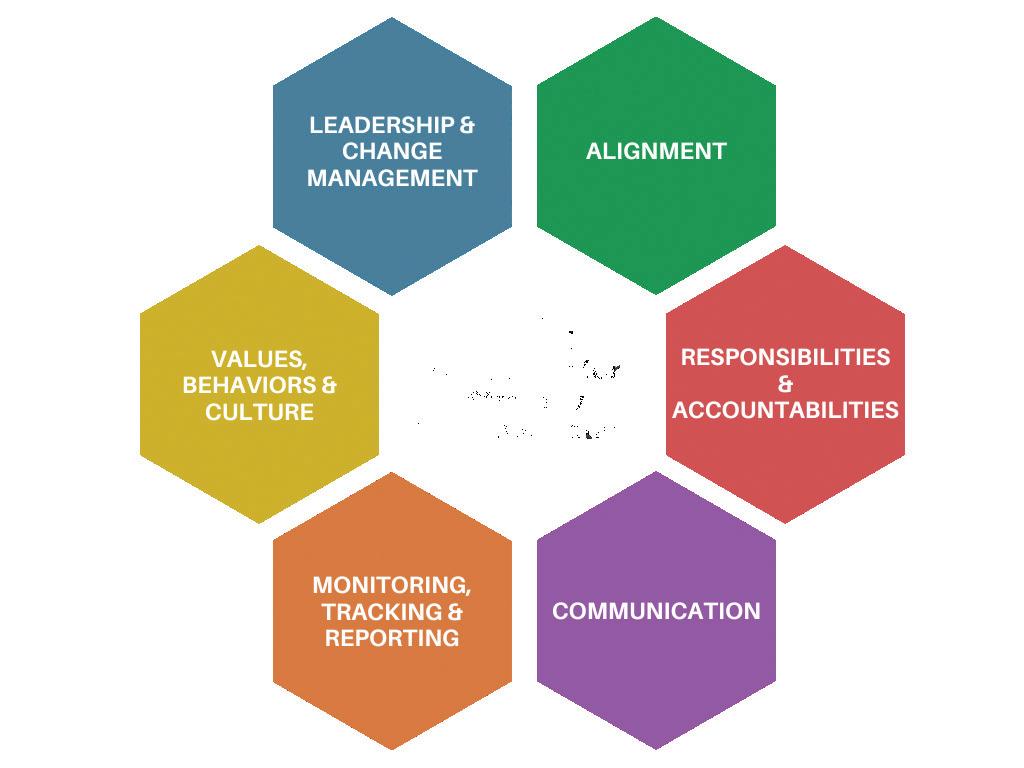

Learn more about SME Strategy's approach. www.SME strategy.net/IASP
SIX
Critical Capacities for Strategy Implementation

A REFRESHING APPROACH TO ALIGNMENT: SME Strategy Consulting

“We understand that senior managers and middle managers are often too engrossed in the day-to-day operations to effectively work on the bigger picture. So, when these leaders get a chance to step back and address these crucial issues, it’s a breath of fresh air,” empathizes Anthony Taylor, CEO of SME Strategy Consulting. When leadership teams collectively zoom out together, they can more effectively see the problems and opportunities within their organizations.
“SME STRATEGY CONSULTING EMPOWERS VARIOUS STAKEHOLDERS AND LEADERS WITHIN ORGANIZATIONS TO ALIGN TOWARDS A CLEAR AND COMMON FUTURE – A FUTURE WITH A SHARED COMPANY MISSION, VISION, AND VALUES.
Most organizations that come to SME Strategy are stuck in what they call the “Multiple Destination Trap,” when different individuals or groups are unclear about where they are headed as an organization, what their priorities and goals are, or who is accountable or responsible for a certain initiative or project. This misalignment causes uncertainty, frustration, and wasted resources within the respective teams and individuals.
SME Strategy Consulting empowers various stakeholders and leaders within organizations to align towards a clear and common future – a future with a shared company mission,
vision, and values. They apply a people-first approach, fostering a sense of contribution and buy-in from all participants. This approach not only aligns teams but also instills a sense of capability and control in the process.
“We guide these groups through a structured process, enabling them to understand each other’s perspectives and align on shared outcomes,” says Anthony. “We then support accountability, follow-up, and training to ensure they reach their desired destination. Most of the time, the shift is from implied to explicit, which helps teams feel secure in their decisions to move forward as a group. Without that explicit conversation and decision-making, a lot is left in a ‘grey area.’”
“We have a proven model not just to align your team but also to support your team’s development,” adds Anthony. “Our methodology for alignment really supports driving transformational change and getting everybody on board with the vision of change.”
“What makes change stick is the implementation of communication and collaboration systems to support decision-making and clarity. Most organizations think that the key to implementing their strategic plan is doing a bunch of ‘stuff,’ but rather, it’s making sure everyone can work well together and that the right decisions can be made quickly.”
SME Strategy is one of the few strategic planning facilitation companies that can support the creation/alignment of a strategic plan and the follow-up accountability and support of the plan. They have coverage across the US and Canada.
Founded in 2011, SME Strategy is available for virtual and in-person facilitation times to meet the needs of organizations in all North American (and many global) time zones. Learn more at www.smestrategy.net.
SPONSORED CONTENT
STRATEGY MAGAZINE | ISSUE 39 | SPRING 2024 23 RETURN TO CONTENTS
DEVELOPING A GROWTH STRATEGY FOR
SITUATIONAL MARKETS


DOWNLOAD OR PRINT THIS ARTICLE RETURN TO CONTENTS 24 SPRING 2024 | ISSUE 39 | STRATEGY MAGAZINE


The way that strategists think about their customer markets is based on the outdated idea that each person represents a unit within a market. Today, many companies still use terms like ‘mass market,’ or strategies like the ‘all the people are customers’ strategy, or ‘only certain types of people’ are our customers (‘segmentation’ strategies). When companies define a ‘market’ as a certain number or type of customer, they put artificial constraints on their solutions, with the most glaring being that certain solutions are only for certain people. These constraints hinder innovation and limit growth.
As intelligent experiences begin to dominate business models and dramatically increase customer expectations, it is a strategic imperative that we create a ‘new’ definition of what constitutes a “market.” Ironically, the answer may lie with what seems to be the common definition of the word “market;” a situation in which a customer has a need and a company has a solution. Therefore, anyone who finds themselves in a situation where they need a solution can and will find that solution immediately.
The objective of this article is to explain the concept of a situational market, distinct from the traditional concept of a market, and to propose an approach for sizing situational markets. This approach enables companies to build new market strategies that create far more revenue.
WHAT SITUATIONAL MARKETS SHOULD LOOK LIKE
TODAY Which picture-taking business would you rather be in? Canon’s or Apple’s? Picture-taking is a situational need. You find yourself with people you love in a place you want to remember, and you want to take a picture. It’s the situation that drives the market for photos today, not a segment of people who care about photo quality and professional lenses. Sure, there is a market for Canon’s products. It’s just so much smaller than Apple’s.
One of the most important, and some say influential, articles ever written about strategy is Christensen et al’s (2001) “Skate to Where the Money Will Be.” The authors’ theory is that integrated markets, where a few vertical companies make all the profit, are almost always replaced by disintegrated, flexible markets, where new entrants profit from a shift in customer expectations. That is, markets are not fixed. They are flexible. Customer expectations change because new needs arise.
In a follow-up article, entitled “Marketing Malpractice”, Christensen et al’s (2005) show why companies cannot shift to new opportunities; they focus on segmentation rather than
RETURN TO CONTENTS STRATEGY MAGAZINE | ISSUE 39 | SPRING 2024 25
SEEING MARKETS AS CUSTOMERS
Definition The number of people who have similar needs
SEEING MARKETS AS SITUATIONS
The number of times situations arise where needs can be met
Market Attributes Rigid, based on stated attitudes, unable to adapt Flexible, based on jobs to be done, expansive
Sizing Limited by number of people
Descriptive Example
Market descriptions use a ‘who’ statement. For example, ‘women who have recently bought a home’ or, ‘people who love cats’
Type of Innovation Produced Solutions targeted to the stated preferences of a limited group of people
‘the job to get done.’ The authors write, “the job, not the customer, should be the unit of analysis.” They argue that the reason so many products fail is that companies fail to consider the job to get done, thinking that if they do customer segmentation, they will be successful. They rarely are.
What most people fail to grasp but was clearly inferred by the authors is that depending on the situation, jobs to be done change too. Joe Pine (2019) furthers Christensen et al’s (2005) insight and argues that there are no ‘customer markets,’ at least not as marketers tend to think of them. Instead, there are ‘markets within.’ He means that as a need arises for a person, a market is created. The company that can meet that person’s very specific need creates the exchange of value. And each time that happens, a market is established. These ‘markets within’ are actually the materialization of situational markets.
A situation is a set of circumstances, or a moment in time in which an individual, has a need. Needs that arise in particular situations are always the same, and they can be anticipated and designed for. The most lucrative situational needs to solve are common, frequently occurring situations that many people experience.
Artificial intelligence and smart technologies have enabled companies to customize experiences to the specific situation customers finds themselves in. So, if strategists want to formulate growth plans that capture more customer value, they need to start seeing markets as situations rather than types of people.
Table 1 summarizes the differences between seeing markets as customer segments and seeing markets as situations.
Potentially unlimited, or limited only by the number of times the situation can arise
A situation often starts with a ‘when’ statement. For example, ‘when you are alone on a Saturday afternoon’ or ‘when you cannot find your car keys’
Solutions designed to get jobs done for whomever has a similar situation
Cannon is in the photo-taking business. Their strategy is built around the traditional idea of a market: the number of like-minded photo-taking customers. Apple is also in the phototaking business. Their strategy, like many smart solution companies, is based on the number of situations in which people want to take photos.
In an increasingly competitive marketplace of solutions, common situations that people find themselves in are the source of real growth and value because there are vastly more situations to service than people. This is especially true today when people have so many choices to select from in their immediate situation. A focus on situations helps the company to be constantly evolving. They understand the circumstances of their customers and they know their circumstances change.
Some companies might argue that they understand their customers’ needs by merely analyzing the past activities and preferences of their customers. While these insights are helpful, they fail to predict situational needs. For instance, enjoying a movie on a Friday night doesn’t necessarily imply a desire to repeat the experience on Saturday evening. However, if faced with the task of finding a restaurant on Saturday night, the need for food becomes apparent. As tools become more intelligent, situational shifts will be more discernible. Therefore, focusing on situations represents the best way to tailor solutions for customers.
DEVELOPING A STRATEGY FOR SITUATIONAL MARKETS
Developing a situational market strategy involves three steps. The first step, Assess, entails fully evaluating your data and insights by asking questions such as “Do you have the tools to evaluate and prioritize different situations that people
find themselves in?” Understanding the landscape is crucial before starting the next step. The second step, Discover, involves embarking on a journey to discover new ways to address the situations that are important to your customers. This journey involves engaging directly with customers to gain valuable perspectives. Finally, Define, necessitates articulating a clear strategy that bridges the gap between your capabilities and your customer’s situational needs as well as defining actionable steps and demonstrating how your offerings meet their needs. This step ensures that your market strategy is tailored to meet the specific demands of situational markets. The following paragraphs describe these three steps in detail.
Step One: Assess
There are two activities to assessing your company’s abilities to understand situational markets. First, compile all available data and insights that may explain common customer situations. Second, evaluate your capacity to gather situational or contextual data.
At the end of the assessment, you should have a list of common situations that customers are likely to experience and potential data sources to pull from. For example, a situation of ‘I’m in a hurry and need to eat’ could occur as often as 1.5 billion times per month.
When I’m in a hurry and I need to eat 1.5 Billion+
TABLE 1: KEY DISTINCTIONS BETWEEN CUSTOMER AND SITUATION MARKETS
26 SPRING 2024 | ISSUE 39 | STRATEGY MAGAZINE
“ ARTIFICIAL INTELLIGENCE AND SMART TECHNOLOGIES HAVE ENABLED COMPANIES TO CUSTOMIZE EXPERIENCES TO THE SPECIFIC SITUATION CUSTOMERS FINDS THEMSELVES IN.
Step Two: Discover
Once you’ve assessed your ability to understand situational markets, the next step is to find the opportunities that matter most. This requires executing the following three activities:
1. Through a combination of observation, as well as quantitative and qualitative data gathering, identify common situations that arise.
2. Determine the frequency of these situations. Employ techniques such as direct inquiry or seek to identify situations that resonate with a larger audience than you currently serve.
3. Identify a multitude of “jobs-tobe-done” across various situations. Recognize that when a job-tobe-done transcends individual situations, these situations are often interconnected. Such interrelated scenarios are more easily addressed by your solutions. Through the discovery activities, you should have a map of the situations that offer the most opportunity (see Table 2 for an example of situations map).
Step Three: Define
Step three has one primary activity: turning discovered insights and data into a strategy. To accomplish this, the strategist will review the data and develop recommendations on where the company should focus its efforts to capitalize on the identified opportunities.
To illustrate the three-step approach to crafting a market strategy for situational markets, let’s look at a renowned anecdote involving Clayton Christensen and a certain restaurant chain. For years, Christensen told the story of a restaurant chain seeking his counsel on growth. Through firsthand observations, he gained valuable insight by asking an unconventional question: “What did you hire this product to do?” Focusing
solely on milkshakes, he learned that the motivation for buying a milkshake varied between morning and afternoon, constituting two distinct “jobs to be done” based on the situational context.
While never disclosed as the restaurant, let’s imagine that McDonald’s applied Clayton’s insight to adopt a situation-based approach to strategic growth. During step one, Assess, McDonald’s reviews its own market research for clues about common situations it should focus on. The company also reviews contextual data like daily volume numbers, menu item sales, and use of drive-throughs to help it understand can be learned about the situations people find themselves in.
During step two, Discover, McDonald’s then conducts primary research with customers to identify new situations that provide opportunities for new revenue. Using both field research and quantitative, the company studies the potential types of situations and jobs to be done that each opportunity presents. It discovers that people’s needs change based on their situation. As mentioned, what people hire a milkshake to do in the morning is different than what they hire a milkshake to do in the afternoon. As a consequence, McDonald’s realizes that it can grow purchases of its fast food by focusing on common situations that most people experience.
During the third step, Define, McDonald’s devises a growth strategy that can be summarized as follows. McDonald’s helps families and individuals enjoy fast food that is designed to meet their needs when common food situations arise. Every day of the week, whether it’s morning, noon, or night, we provide consistent,
quality food items that our customers can enjoy. We will build on our success by focusing on the following food-need situations:
• When people are rushed for breakfast, lunch, or dinner.
• When people are traveling as families.
• When people are traveling as individuals.
• When people are training for high performance races.
• When people are celebrating an accomplishment. From here, the organization is able to create a roadmap to success by matching their offerings to the situational needs.
CONCLUSION
Companies need to fully embrace the moment their customers find themselves in. That, in part, means formulating growth strategies based on the situational needs of their customers and their job-to-be-done. The new formula to growth and success is thus a focus on common situations and the jobs-to-be-done.
REFERENCES
Christensen, C. M., Raynor, M.E., and Verlinden, M. (2001) Skate to Where the Money Will Be. Harvard Business Review, November.
Christensen, C. M., Cook, S., and Hall, T. (2005) Marketing Malpractice: The Cause and the Cure. Harvard Business Review, December. Joseph Pine II, B. (2019) Customering: The Next Stage in the Shift to Mass Customization. Mass Customization and Design Democratization (Kolarevic, B. and Duarte, J. P. editors), Routledge, London, pp. 13-28.
ABOUT THE AUTHOR
David W. Norton, PhD is the founder and principal of Stone Mantel, The Experience Strategy Company, and The Experience Strategy Collaboratives. His clients include some of the world’s most famous brands. He is the author of Digital Context 2.0 and has published in HBR. E: davenorton@stonemantel.co
SITUATION FREQUENCY THEY WILL HIRE US TO PROVIDE When people are rushed for breakfast 1.5 billion times Hot, ready-made food When people are traveling as families 800 million times A place to relax and talk When people are traveling as individuals 700 million times A quiet place to relax and work TABLE 2: SITUATIONS AND FREQUENCY
STRATEGY MAGAZINE | ISSUE 39 | SPRING 2024 27 RETURN TO CONTENTS
BY CHRISTIAN RUSTEBERG
In today’s fast-paced business landscape, adapting quickly to change is crucial for staying competitive. While valuable insights are plentiful, converting them into actionable plans presents notable challenges. To address this, many organizations rely on SWOT analysis, a framework that assesses both the helpful and harmful, as well as the internal and external factors. Unfortunately, the traditional SWOT has several limitations that actually don’t help prioritize those helpful or harmful factors, nor does it help develop concrete actionable steps to address those factors. The objective of this article is twofold. This paper will 1) Describe SWOT and its limitations and 2) Introduce a new method that addresses the traditional framework’s shortcomings so it can reach its full potential.
WHAT SWOT IS AND ITS LIMITATIONS
The creation of SWOT (Strengths, Weaknesses, Opportunities, Threats), is most often attributed to Albert Humphrey (Puyt et al., 2023) during his work on the Team Action Management (TAM) program under Robert F. Steward at Stanford Research Institute (SRI) in the 1960s. TAM was a research program developed to understand why corporate planning was failing and to create a system for managing change.
SWOT focuses on the following four key concepts (see Figure 1):
• Strengths that represent internal attributes of the organization that provide a competitive advantage (e.g., Apple’s strong brand and diverse product range).
FROM INSIGHT TO ACTION:
ENHANCING SWOT ANALYSIS FOR AN ACTIONABLE PLAN
• Weaknesses that represent internal areas needing improvement (e.g., Boeing’s reliance on defense contracts and safety concerns).
• Opportunities that represent external favorable conditions (e.g., SpaceX’s potential in the commercial spaceflight market).
• Threats that represent external factors that could disrupt the organization’s progress (e.g., ExxonMobil’s challenges with the transition to renewable energy). While there is no universally agreed upon method for conducting a SWOT analysis, SWOT creation typically takes place during a one-day workshop with a group of top performers. The process involves four steps. First, the participants are divided into four teams, each dedicated to exploring one aspect/area of the SWOT. Second, the facilitator leads these teams through brainstorming sessions, where they usually identify either immediate pressing issues or the generic standards for their area. Third, using techniques ranging from quick sticker voting to iterative ranking, participants prioritize the most critical areas of focus within their quadrant. Fourth, the top ranked insights are handed off to the strategic planning committee, which then decides how, or indeed if, they will inform the strategic direction.
Despite its power and simplicity, the traditional SWOT analysis has seven critical limitations. First, it is subject to the groupthink trap. Indeed, the consensus-seeking collaborative nature of the traditional SWOT workshop can undermine the consideration of diverse perspectives, leading to overlooked opportunities and unchallenged threats. Second, the broad strokes nature of a one-day event often leads
to reductionism, failing to account for the nuanced context within which the strengths, weaknesses, opportunities, and threats exist – reducing the strategic value of the analysis. Third, many SWOT exercises fail to capture the ongoing changes in the business environment, quickly rendering strategic insights obsolete. Fourth, using top performers is helpful, but without facts, data, and research, their assessment may be biased, leading to strategic missteps. Fifth, using quick sticker voting or iterative ranking techniques within a quadrant alone can result in missing critical strategic insights and misallocating resources by not fully assessing the interplay between elements. Sixth, handoffs to committees can lead to improper reclassification, such as labeling weaknesses as “opportunities to improve.” Improperly assigning strengths, weaknesses, opportunities, and threats in a SWOT analysis can distort reality, leading to ineffectiveness. Finally, capturing observations within the SWOT framework often results in well-organized lists without real, actionable insights. Even if participants arrive at a list of strategic actions, implementing them effectively requires a deeper understanding of how each factor interacts and impacts the organization’s overall strategy and objectives.
FOUR ESSENTIAL TOOLS OF THE NEW METHOD
To facilitate the reader’s understanding of the innovative method proposed, four key tools need to be presented first: the What/ Why Framework, the Impact/Likelihood Matrix, the TOWS Force Field Analysis, and the Effort vs. Impact Matrix.
What/Why Framework
The What/Why Framework is used to ensure each SWOT element is clearly defined. As highlighted by Aaker and Mcloughlin (2010), this framework deepens
DOWNLOAD OR PRINT THIS ARTICLE 28 SPRING 2024 | ISSUE 39 | STRATEGY MAGAZINE RETURN TO CONTENTS
the SWOT analysis by focusing on both the identification (“What”) and implications (“Why”) of internal and external assessments. The first step, the “What” involves identifying both internal and external factors impacting the organization. After defining a “What,” its related “Why” aspect identifies the underlying reasons it will impact the organization. For example, a regional director of a local bank observed the state legislator was considering moving medical reimbursement payments from the beginning to the end of the month. “State reimbursement changes will cause a cash flow gap for doctors” represents the “What,” while “the bank can address this pain point for medical professionals through tailored financial solutions” represents the “Why.” Since this is a change in the external environment and is helpful to the organization, it’s considered an opportunity.
Impact/Likelihood Matrix
The purpose of the Impact/Likelihood Matrix is to assess and prioritize a group of items based on their potential impact and likelihood of occurring (Duijm, 2015) Impact refers to the effects an item can have on the organization and is measured on some form of high to low scale. In turn, likelihood refers to the chances of the item having that impact, and is also rated on a high to low scale. The matrix is a grid with impact on the vertical axis and likelihood on the horizontal axis.
In the particular context of SWOT, two impact/likelihood matrices are required, one to assess the external and the other to address the internal aspects. These matrices are used in two ways: 1) to analyze new SWOT items and 2) to track existing items. Impact always refers to how helpful or harmful the item is to the organization’s ability to achieve its mission and vision. In the external matrix, likelihood is based on the progression of external trends while in the internal matrix, it is based on how likely a strength or weakness is to remain and how widespread it is in the organization. Continuing with the banking example presented above, executives believed “State reimbursement changes” would have a relatively high impact, and the organization was somewhat likely to feel that impact, placing the opportunity in the upper right-hand corner of the matrix (high impact/high likelihood) (Figure 2).
TOWS Force Field Analysis
The purpose of a TOWS Force Field Analysis is to identify and evaluate the strengths and weaknesses that influence one opportunity or threat (Thomas, 1985). This technique comprises three steps. First, identify the strengths or weaknesses that align with the opportunity or threat. Next, assess the amount of influence each strength and weakness exerts on the
reimbursement charges
organization’s ability to respond to the opportunity or threat. This assessment highlights how prepared the organization currently is to address the opportunity or threat. Finally, determine the work that would need to be done within the strengths and weaknesses to better prepare the organization to address the opportunity or threat. Still continuing our example (see Figure 3), the bank identified several strengths
Helpful Harmful External Internal Strengths Weaknesses Opportunities Threats SWOT
FIGURE 1: TRADITIONAL SWOT CANVAS
Low High Impact to the Mission/Vision Likelihood Low High Opportunity Threat State
0 1 2 3 4 5 6 7 8 9 10 10 9 8 7 6 5 4 3 2 1 0
STRATEGY MAGAZINE | ISSUE 39 | SPRING 2024 29 RETURN TO CONTENTS
FIGURE 2: IMPACT/LIKELIHOOD MATRIX
and weaknesses including, challenging application process (weakness), limited awareness of the financial needs of medical professionals (weakness), innovative financial products (strength), and excellent relationships in the medical community (strength). To address weaknesses and capitalize on strengths, the executives decided they would need to streamline the application process, leverage the bank’s relationships in the medical community to better understand their financial needs, and develop innovative products tailored to those needs.
Effort vs. Impact Matrix
The purpose of an Effort vs. Impact Matrix is to help prioritize tasks or projects based on the relationship between the effort required to complete them and the potential impact or value they will bring (Helmke, 2022). Effort represents the amount of time, resources or energy required to complete the task or project. Impact refers to the potential benefit or value that will result from the task’s completion. The matrix is a grid with impact on the vertical axis and effort on the horizontal axis.
In the context of SWOT, this technique is used to prioritize the opportunities and threats by comparing the work the organization needs to do to be better prepared to address them with the potential impact they will bring to the organization. Effort is determined by the actions identified in the TOWS Force Field Analysis and impact is derived from the Impact/ Likelihood Matrix. Continuing with the same example, when comparing the work identified in the TOWS with other opportunities and threats, the Executives determined that “State reimbursement changes” represented a medium effort opportunity. From the Impact/Likelihood matrix, they recognized that this opportunity could have a relatively high impact on the organization, positioning this opportunity in the upper middle of the Effort vs. Impact Matrix (see Figure 4).
AN INNOVATIVE METHOD
TO MAXIMIZE SWOT POTENTIAL
Leveraging the four tools described in the previous section, we now propose an innovative method to address traditional SWOT limitations so it can
STATE REIMBURSEMENT CHANGES
Strengths
The Work to be Done
Streamline the Application Process
Learn about the Financial Needs of Doctors
Leverage Relationships in the Medical Community
Develop Products That Match Doctors’ Needs
Weaknesses
reach its full potential. The proposed method has three phases and 12 steps. Although presented in sequence, the phases and steps can be executed in parallel. For best execution of the method: 1) Managers should evaluate the organization’s internal strengths and weaknesses through monitoring operational metrics, benchmarking and leading continuous improvement
efforts; 2) Directors (the leaders close to the daily work) should be charged with monitoring the changes in the external environment for opportunities and threats; and 3) Executives should synthesize the insights from Managers and Directors to set the strategic direction, aligning internal capabilities with external factors ensuring the organization’s future.
FIGURE 3: TOWS FORCE FIELD ANALYSIS
Innovative
Leadership’s
Limited Awareness of Doctors’
Challenging Application Process High-Interest Rates Low High Impact to the Mission/Vision Effort Low High Opportunity Threat State reimbursement charges
Financial Products Relationships in the Medical Community Robust Digital Banking Platform
Entrepreneurial Spirit
Needs
30 SPRING 2024 | ISSUE 39 | STRATEGY MAGAZINE RETURN TO CONTENTS
FIGURE 4: EFFORT VS. IMPACT MATRIX
The purpose of the first phase, Assessing and Tracking External Changes, is to gain a detailed understanding of the external environment. This phase encompasses five steps. During step one, Gather Information About the External Environment, directors use the What/Why framework to define changes in the external environment and document them as either opportunities or threats. During step two, Present New Opportunities and Threats, directors brief the executives on the change and possible impact of that change. Executives, in turn, assess and question the information provided to get a deeper understanding. In step three, Assess Opportunities and Threats Based on Their Impact and Likelihood, the executives independently evaluate the opportunity or threat using a blank Impact/Likelihood Matrix, citing strengths and weaknesses that could alter the perceived impact, and trends that could affect the likelihood, to support their conclusions. During step four, Align on a Unified Assessment of Impact and Likelihood, the executives engage in an open debate and justify their conclusions, in order to align on a single assessment of impact and likelihood. Finally, during step five, Record New Opportunities and Threats for Oversight, the new opportunity or threat, is tracked, along with the existing opportunities and threats on the External Impact/Likelihood Matrix, until it is time to be addressed. To keep the matrix current, directors keep the executives apprised of any changes to existing opportunities or threats, documenting the updates to maintain transparency and traceability.
Continuing with the banking example, the director of West Coast Sales learned about the state reimbursement changes and, after doing additional research, presented her findings to her executive team. After some back and forth, the executives started their process of individually assessing the opportunity, asking the director several follow up questions as they made their considerations. When they finished, they started to debate the final unified impact and likelihood and while a consensus was quickly established, prioritizing it among the other existing
opportunities and threats required some additional debate.
The purpose of the second phase, Assessing and Tracking Internal Capabilities, is to gain a detailed understanding of the organization’s capabilities. This phase encompasses five steps, similar to those above but where the focus is on strengths and weaknesses and not opportunities and threats:
1. Gather Information About the Internal Environment,
2. Present New Strengths and Weaknesses,
3. Assess Strengths and Weaknesses with Impact/Likelihood Matrix,
4. Align on a Unified Assessment of Impact and Likelihood, and,
5. Record New Strengths and Weaknesses for Oversight.
Continuing with the banking example, the managers and executives of the bank had been updating the Internal Impact/Likelihood Matrix for years meaning the bank was aware of many of the strengths and weaknesses used in this example and had been tracking them for some time. In fact, the strength of a Robust Digital Banking Platform had, just a year before, been a weakness but due to the threat posed by other online banking platforms, the bank chose to address that weakness.
The purpose of the third and last phase, Matching Capabilities to Changes to Advance the Organization, is to identify the few, most valuable, opportunities or threats to pursue. This phase encompasses two steps. During the first step, Align Strengths and Weaknesses with One Opportunity or Threat, executives use the TOWS Force Field Analysis to align the organization’s capabilities with only the most likely and impactful opportunities and threats to understand the effort it would take to address them. During the second step, Rank Opportunities and Threats and Derive Actionable Plans, executives rank each opportunity and threat, using the Effort vs. Impact Matrix, and then choose the most valuable to pursue.
Going back to our banking example, due to the time sensitive nature of the opportunity, the executives chose to immediately do a phase three analyses. With a clear understanding of the effort, the bank instantly started the work to leverage its strengths and
bolster its weaknesses. The endeavor proved to be a tremendous success garnering the highest sales funnel conversion rates for any new product campaign in the bank’s history.
CONCLUSION
It is important to mention that implementing the proposed method takes work and dedication to maintain but its efficiency and effectiveness far out way a process of hastily gathering the information in a one-day SWOT workshop. By recognizing the limitations of traditional SWOT and implementing such a structured approach that integrates continuous assessment of external changes, internal capabilities, and strategic alignment, organizations can effectively navigate dynamic business landscapes and capitalize on emerging opportunities while mitigating threats.
REFERENCES
Aaker, D. and McLoughlin, D. (2010) Strategic Market Management: Global Perspectives. Wiley. Duijm, N. (2015) Recommendations on the Use and Design of Risk Matrices. Safety Science, 76(76), 21–31. Helmke, S. (2022) Where Do You Start When Everything Feels Urgent? Use an Effort-to-Impact Matrix. The Learning Professional, 43(2), 72-74. Puyt, R., Lie, F., and Wilderom, C. (2023) The Origins of SWOT Analysis. Long Range Planning, 56(3).
Thomas, J. (1985) Force Field Analysis: A New Way to Evaluate Your Strategy. Long Range Planning, 18(6).
ABOUT THE AUTHOR
Christian Rusteberg is a seasoned corporate strategy and continuous improvement professional with more than 20 years of experience in the Energy, Finance, and Consulting sectors. Christian holds an MBA with a focus on Information Management and is a certified Strategic Planning Professional. Beyond professional pursuits, he is an active board member for Wings of Hope and co-founded American Heroes, supporting armed forces families and first responders.
E: crusteberg@ameren.com
STRATEGY MAGAZINE | ISSUE 39 | SPRING 2024 31 RETURN TO CONTENTS
ILLUSTRATING “ WHAT IS A SOUND STRATEGY SYSTEM? ” A SYSTEMS THINKING PERSPECTIVE
BY PIERRE HADAYA AND L. MARTIN CLOUTIER
Asound strategy system (often called strategy management system) is essential to the longterm success of any organization (Hadaya and Gagnon, 2020). It is the comprehensive and integrated set of continuously executed strategy-related activities that permits an organization to be effective, agile, and efficient in today’s increasingly competitive, global and technology-driven market. Yet, despite its importance and all that has been learned since the launch of the business strategy revolution in the 1960s, most organizations are still having great difficulties devising and implementing such a complex system. The absence of a sound management system, in turn, is probably the key factor explaining why 50% to 90% of strategic initiatives fail and why the life expectancy of organizations is in a serious decline (The Economist Intelligence Unit Limited, 2017). To begin addressing this important gap, the objective of this article is to make an initial attempt to illustrate the key components of a strategy system and how they are related to one another. To do so, we rely on a modeling technique from systems thinking. In addition to identifying the key components of such a system, this technique enables us to capture the feedback loops amongst these key components that strategists and executives must understand and put in place for their organization to be effective, agile, and efficient to succeed in the long-term.
AN INTRODUCTION TO SYSTEMS THINKING
Systems thinking is both a way of representing the structure of a complex system using the feedback principles of system dynamics and a way to analyze it (Lane, 1994). System dynamics was introduced by Jay W. Forrester (1958) to support the development of systems of different nature, whether procurement supply chains, business processes, or broader phenomena like climate change (Sterman, 2000). It uses level-and-rate variables to quantitatively model, measure and produce results to answer specific questions of interest regarding evolving change over time. The system dynamics occurs because of the level-rate interaction over time. One of the distinguishing features of system dynamics, compared to other methods and techniques is that, in continuous time, it helps track changes over time in the variable of interest by capturing the reinforcing and balancing complex interactions among the feedback loop structure.
Systems thinking can be viewed as a technique that mobilizes the principles of feedback found in system dynamics but qualitatively. It uses a specific syntax to create feedback loops (see Figure 1). A single polarity arrow indicates the direction of influence (Left panel). For example, the arrow with the “+” sign indicates that the cause-and-effect variables move in the same direction, while an arrow with the “-” sign indicates that the cause-and-effect variables move in the opposite direction. In turn, the arrow with the “=” sign is a time delay mark and is used to represent the time lag or rarity of occurrence between the variables.
Furthermore, a reinforcing feedback loop “R” is identified when the number of polarities among the variables in a
feedback loop is even while a balancing feedback loop “B” appears when the number of polarities among the variables is odd.
The causal loop shown in the right panel of Figure 1 represents a reinforcing feedback loop between two variables where the Leadership Relationship with Stakeholders supports the Collaboration, and the Collaboration supports the Leadership Relationship with Stakeholders. Thus, systems thinking is useful to examine interactions between a very small to a very large set of variables in multiple reinforcing and balancing feedback loops. It helps to synthesize the overall set of variables in a complex system as well as to analyze the details found within the broader systemic whole.
THE KEY COMPONENTS OF A SOUND STRATEGY SYSTEM AND HOW THEY RELATE TO ONE ANOTHER
As mentioned above, a sound strategy system is the comprehensive and integrated set of continuously executed strategy-related activities that allows an organization to be effective, agile and efficient in today’s increasingly competitive, global, and technology-driven market. The strategy-related activities can be classified into the following five groups (Hadaya, Stockmal et al., 2023):
1. Formulate – to devise the strategy.
2. Implement – to transform how the organization functions (i.e., the strategy operating model) to be able to execute the new strategy.
3. Execute – to deliver value to the organization’s stakeholders, as defined by the strategy.
4. Engage – to do all that is necessary to enable and get internal stakeholders to commit themselves to make the strategy work.
5. Govern – to oversee the previous four activity groups.
DOWNLOAD OR PRINT THIS ARTICLE 32 SPRING 2024 | ISSUE 39 | STRATEGY MAGAZINE RETURN TO CONTENTS
To clarify the idea of “integrated set of continuously executed strategy-related activities,” we can use the example of a North American airline that formulates a new strategy calling for the addition of services to Asia. As the airline implements this new strategy by purchasing aircrafts, and setting up operations in Asian airports, it must continue to execute its current strategy of offering services in North America until its new strategy is fully implemented. In addition, it must engage its employees in and govern these activities.
Figure 2 is a systemic representation of a sound strategy system using the systems thinking’s causal loop technique. Because it comprises a large set of key variables, a simplified version of causal loop diagram that only considers the influences without the feedback loops’ polarity is presented. To describe this modeling, we’ll proceed in two steps. First, we explain the activities at the heart of each activity group as well as their respective internal feedback loops. For more information on the particularities of these activities, see Hadaya, Stockmal et al. (2023). Second, we explain the key relationships between the activities from different groups (i.e., external feedback loops).
THE FIVE GROUP OF STRATEGY ACTIVITIES IN DETAIL
The red sector in Figure 2 comprises the Formulate activities. Together these well-known activities make up the strategy formulation process which generally begins with an analysis of the external and internal environments. Next, strategy alternatives are proposed after which they are analyzed, and the best one is selected and finalized.
If the analysis and the comparison of alternatives is unsatisfactory, the organization may decide to loop back to the external and/or internal environment analysis activities.
The orange sector in Figure 2 comprises the Implement activities. Together these activities make up the strategy implementation process which goes as follows. The process begins with the design of the target enterprise architecture that is a blueprint of how the organization will need to function to execute the previously formulated strategy. In parallel to designing the target enterprise architecture, the current enterprise architecture must be documented as comparing the two will enable the identification of the gaps that the organization will need to fill to implement the target enterprise architecture. Results of the gap analysis, combined with other key analyses (e.g., transformation readiness and risk analyses), will then support the elaboration of the transformation plan that regroups all the building blocks transformations to be carried out (i.e., gap to fill) into projects. It orders the timing sequence of their execution so that the benefits the transformation projects will collectively generate are maximized. Next, the transformation projects are executed. It is the execution of these projects that leads to the implementation of the new target strategy operating model, and thus, enables the execution of the new strategy. Two aspects are important to mention here. First, to cope with the complexity of organizations, the six implementation activities are generally conducted in parallel, and that the execution of projects may lead to
changes to the transformation plan, and that both the execution of projects and the elaboration of the transformation plan may lead to changes to the target enterprise architecture (Hadaya and Gagnon, 2017). Second, once the new target strategy operating model is implemented, the new strategy becomes the current strategy and the new target strategy operating model becomes the current strategy operating model of the organization. A prospective misalignment between the current strategy and current strategy operating model will trigger a new strategy cycle.
The gray sector in Figure 2 comprises the Execute activities. The first activity involves executing all the primary (e.g., inbound logistics, outbound logistics, marketing and sales, and service) and support activities (e.g., procurement, technology development, human resource management, and firm infrastructure) in alignment with the strategy to deliver value to the organization’s stakeholders. The second activity entails measuring the performance of the primary and support activities.
The blue sector in Figure 2 comprises the Engage activities. The first activity entails building and implementing an engagement operating model that details how the organization will function to engage stakeholders in the formulation, implementation, and execution of the strategy. Once the engagement operating model is in place, the two-step strategy engagement process can be executed. This process entails respectively developing and executing the communication as well as the stakeholder management and engagement plans. It is important to mention here that the two strategy engagement process activities can provide feedback to the first activity to improve the engagement operating model. This loop is marked with a “=” sign because the occurrence of the influence between the variables is less frequent (i.e., it indicates a time delay mark).
Finally, the green portion in Figure 2 comprises the Governance activities. The first activity entails building and implementing a governance operating model that details how the organization will function to govern the formulation, implementation, execution, and engagement of the strategy. Once the governance operating model is implemented, the other four strategy governance activities – namely, govern
Balancing feeback loop Reinforcing feedback loop Collaboration Leadership, Relationship with Stakeholders ++ + R B R
FIGURE 1: SYSTEMS THINKING SYNTAX AND A CASUAL LOOP DIAGRAM WITH REINFORCING FEEDBACK
STRATEGY MAGAZINE | ISSUE 39 | SPRING 2024 33 RETURN TO CONTENTS
Analyze and Compare Alternatives as well as Select and Finalize New Strategy
formulation, govern implementation, govern execution, and govern engagement – can be executed. To ensure an effective, agile, and efficient governance, these four governance activities must be integrated into one another. In addition, these four strategy governance activities can provide feedback to the first activity to improve the governance operating model and that these relationships have a time delay mark.
THE RELATIONSHIPS BETWEEN THE ACTIVITIES FROM THE DIFFERENT ACTIVITY GROUPS
We are now ready to describe the relationships between the activities of different groups. This entails three steps. First, we describe the relationships that bind the Formulate, Implement, and Execute group of activities into a continuous cycle throughout the lifespan of the organization. Second, we
explain how the Engage activities are related to the Formulate, Implement, and Execute group of activities. Finally, we describe how the Govern activities are related to the other four groups of activities. Because of the numerous feedback loops required to interrelate the different strategy activity groups, the presentation of these interrelationships was simplified by using bolded bidirectional arrows instead of the conventional two unidirectional arrows.
To relate the Formulate, Implement, and Execute group of activities, we can refer to the strategy-strategy operating model alignment cycle (Hadaya and Gagnon, 2020). For an organization to succeed, its operating model must be aligned to its strategy operating model. Hence, once an organization has devised a new strategy (last activity in Formulate), this new strategy is
inevitably misaligned to the current strategy operating model (see Figure 2). This misalignment, in turn, triggers the first Implement strategy activity: Design target enterprise architecture. Once the last activity of the Implement strategy group of activities – namely Execute projects in the transformation plan –is executed, the new target strategy operating model is implemented. This new target strategy operating model is aligned to the new strategy and thus becomes the current strategy operating model. This alignment, in turn, triggers the first activity of the Execute strategy group of activities: Execute primary and secondary activities.
Engagement is key for the successful execution of the Formulate, Implement, and Execute strategy activities. Hence, the Execute the communication as well as the stakeholder management and engagement plans influence each
Design
Elaborate
Current Strategy Operating Model
Implemented
FIGURE 2: A SYSTEMIC REPRESENTATION OF A SOUND STRATEGY SYSTEM USING THE SYSTEMS THINKING’S CAUSAL LOOP TECHNIQUE
and Implement Governance Operating Model
Transformation Plan
New Target Strategy Operating Model
Alignment Status
Assess External Environment
Develop Communication as well as Stakeholder Management and Engagement Plans Conduct Other
(risk, readiness, etc.) Document Current Enterprise Architecture Conduct Gap Analysis Design Target Enterprise Architecture FORMULATE IMPLEMENT EXECUTE ENGAGE
Disalignment
GOVERN Execute
Execute Primary and Secondary Activities Evaluate Performance Govern Engagement Govern Execution Govern Formulation Govern Implementation 34 SPRING 2024 | ISSUE 39 | STRATEGY MAGAZINE RETURN TO CONTENTS
Propose Strategy Alternatives Assess Internal Environment
Build and Implement an Engagement Operating Model
Analyses
Status Execute Projects in Transformation Plan
Communication as well as Stakeholder Management and Engagement Plans
of these three groups of activities. In addition, the Formulate, Implement, and Execute strategy activities must also be related to the Govern Engagement activity and vice versa to properly direct and control the specific engage activities for the formulation, implementation, and execution of the strategy.
An agile strategy governance entails that the Formulate, Implement, Execute, and Engage activities each have their own governance activities. That is why the Govern Formulation activity must be related to the Formulate activities (in the red sector) and vice versa. The same logic applies to the Implement, Execute, and Engage activities. As such, the Formulate, Implement, Execute, and Engage activities are interrelated through their respective Govern activities. For example, if during strategy implementation, enterprise architects realize that a change to the strategy may be required, the Govern Implement activity will gather the required information and send it the strategist involved in the strategy formulation activities via the Govern formulation activity.
CONCLUSION
Using the causal loop modeling technique from systems thinking, this paper this paper describes at a high level, yet in detail, what a sound strategy system is using a feedback loop structure. This illustration of the key components of a sound strategy management system and the relationships that exist between them clearly shows the complexity of such a strategy systems and hints

to the difficulty required to put it into practice. Devising and implementing such a system requires a lot of ingenuity, insight, time, and effort. It is not for the faint in heart. But why should it be? For gaining and maintaining a competitive advantage for long-term success is the holy grail of strategy, and hence, it must be earned.
REFERENCES
Forrester, J. W. (1958) Industrial Dynamics: A Major Breakthrough for Decision Makers. Harvard Business Review, 36(4), 37-66.
Hadaya, P., and Gagnon, B. (2017) Business Architecture: The Missing Link in Strategy Formulation, Implementation and Execution ASATE Publishing, Montreal.
Hadaya, P., and Gagnon, B. (2020) Mapping an Agile Future. Strategy Magazine, 35(May), 18-21.
Hadaya, P., Stockmal, J., et. al. (2023) IASPBOK 3.0: Guide to Strategy Management Body of Knowledge International Association of Strategy Professionals.
Lane, D. (1994) With a Little Help From our Friends: How System Dynamics and “Soft” OR Can Learn From Each Other. System Dynamics Review, 10(2-3), 101-134.
Sterman, J.D. (2000) Business Dynamics. Systems Thinking and Modeling for a Complex World. Irwin Mcgraw-Hill, New York.
The Economist Intelligence Unit Limited (2017) Closing the Gap: Designing and Delivering a Strategy that Works
ABOUT THE AUTHORS
Pierre Hadaya, Ph.D., ASC is a full professor at the School of Management of the Université du Québec à Montréal. As cofounder of ASATE Group, he also collaborates with organizations striving to transform themselves so they can develop a competitive advantage. He is a member of the Board of Directors of the Association for Strategic Planning as well the editor of Strategy Magazine E: hadaya.pierre@uqam.ca
Martin Cloutier, Ph.D., is a full Professor at the Department of Analytics, Operations, and Information technologies, School of Management Sciences, University of Quebec at Montreal (Canada). He holds a joint Ph.D. degree from the University of Illinois at UrbanaChampaign. He has published more than 40 articles in peer-reviewed journals, as many book chapters, and has coordinated seven edited books with colleagues. He is a recognized researcher in the design and use of mixed methods-based frameworks (systems dynamics, group concept mapping). His research interests include the digital transformation of organizations and professions (SMEs, large companies), IT governance and evaluation, sustainable ICT. E: cloutier.martin@uquam.ca
Advertiser Product & Service Centre Strategy Magazine is made possible by the companies below who convey their important messages on our pages. We thank them for their support of the International Association for Strategy Professionals, and Strategy Magazine and encourage you to contact them when making your purchasing decisions. To make it easier to contact these companies, we have included the page number of their advertisement, their phone number, and, where applicable, their website. COMPANY PAGE PHONE WEBSITE Balanced Scorecard Institute 36 919-460-8180 www.balancedscorecard.org Haines Centre for Strategic Management 7 403-236-3928 www.csm-asia.com SME Strategy Management Consulting 22-23 855-895-5446 www.smestrategy.net TFSX 16-17 407-818-1598 www.tfsx.com
STRATEGY MAGAZINE | ISSUE 39 | SPRING 2024 35 RETURN TO CONTENTS
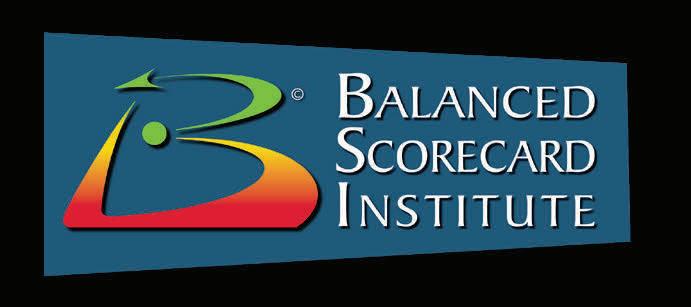

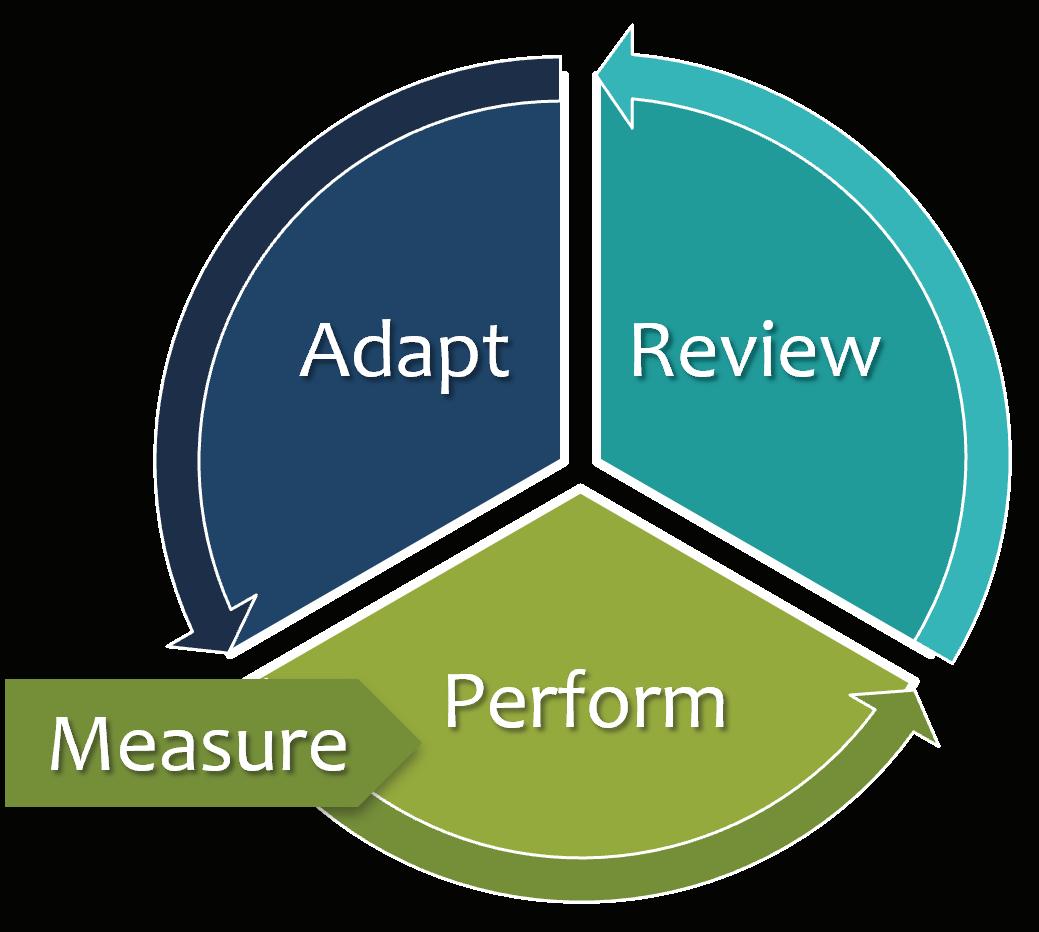
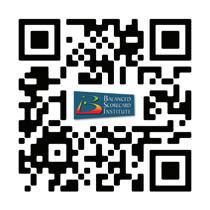
1 DEVELOP MEANINGFUL KPIS 2 FOSTER BUY-IN & OWNERSHIP 3 ENSURE CONSISTENT KPI IMPLEMENTATION 4 DESIGN ACTIONABLE REPORTING & DASHBOARDS 5 ENABLE A CONTINUOUS IMPROVEMENT CYCLE MPRA Helps Organizations: Embrace a dynamic, agile approach to performance management with the Measure-Perform-Review-Adapt (MPRA) framework. Say Goodbye to "Set it and Forget it" Key Performance Indicators +1 919-460-8180 info@strategymanage.com balancedscorecard.org




 IPIERRE HADAYA, EDITOR, STRATEGY MAGAZINE
IPIERRE HADAYA, EDITOR, STRATEGY MAGAZINE

 PIERRE HADAYA , PHD, ASC Editor, Strategy Magazine pierre.hadaya@strategymagazine.org
PIERRE HADAYA , PHD, ASC Editor, Strategy Magazine pierre.hadaya@strategymagazine.org

 AMONICA ALLEN, IASP PRESIDENT
AMONICA ALLEN, IASP PRESIDENT






















































 BY PETER COMPO
BY PETER COMPO


















































































































